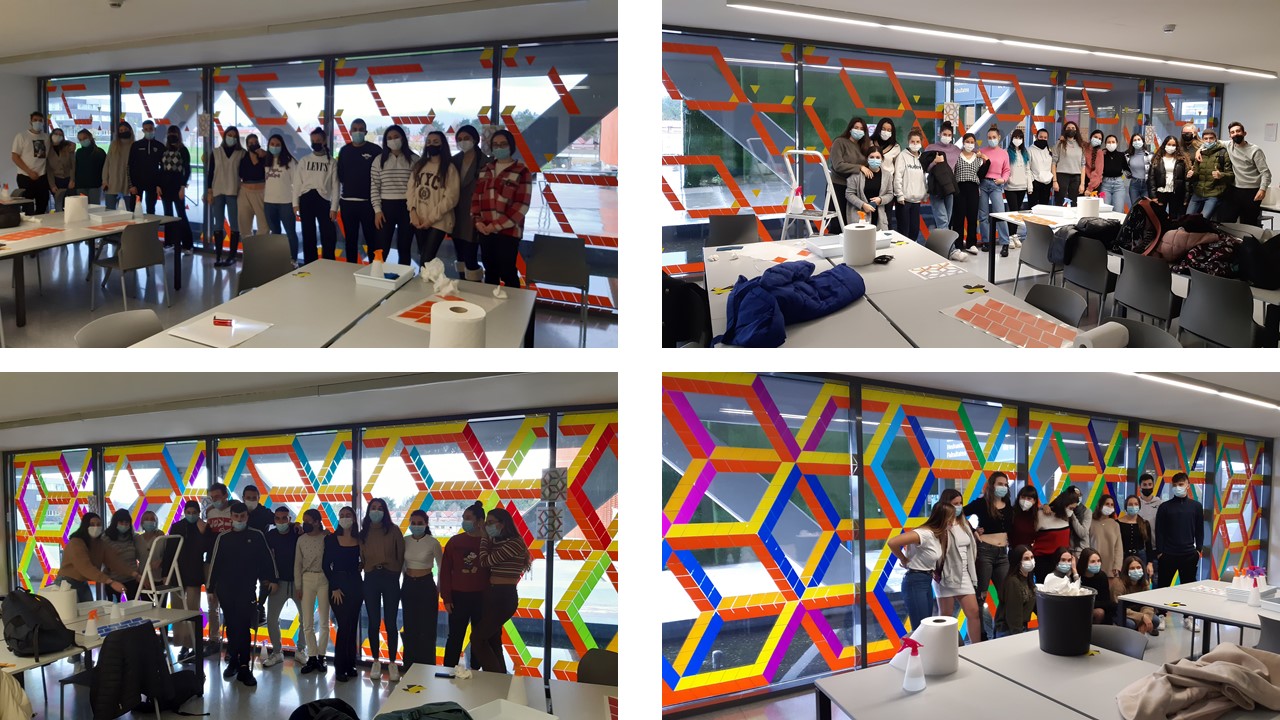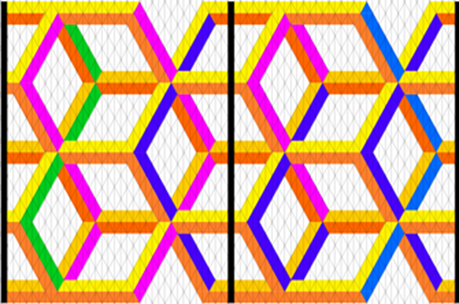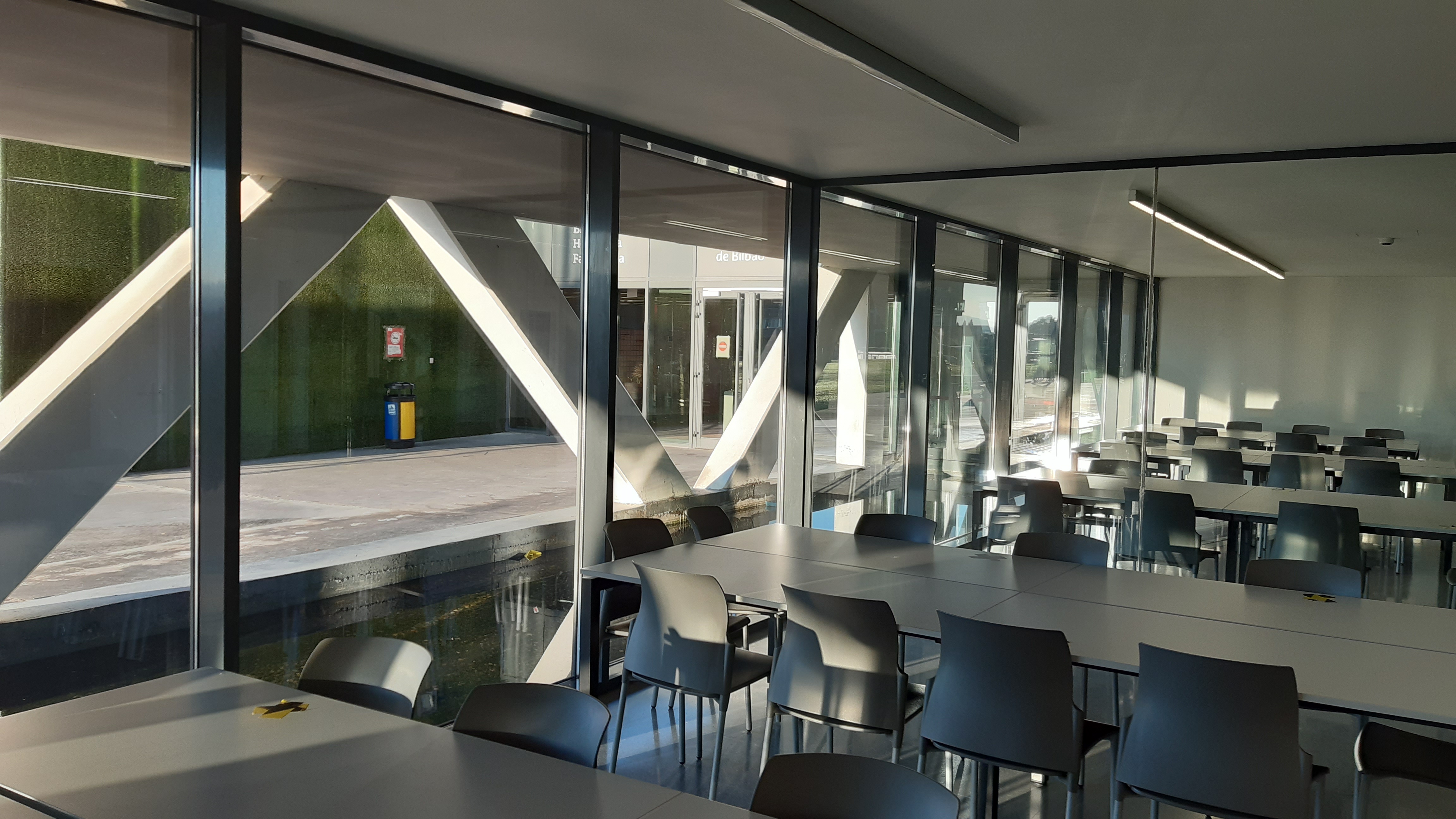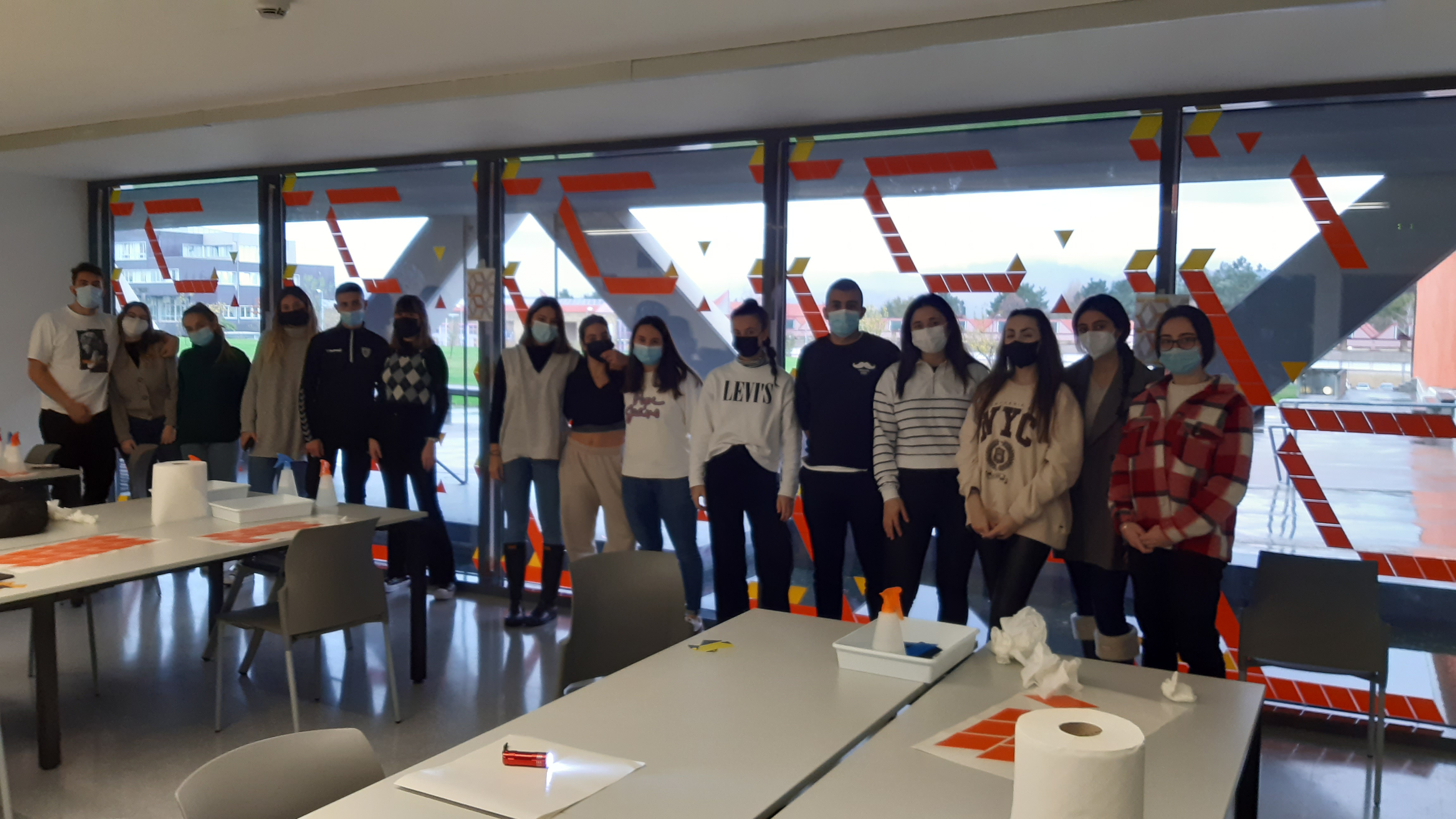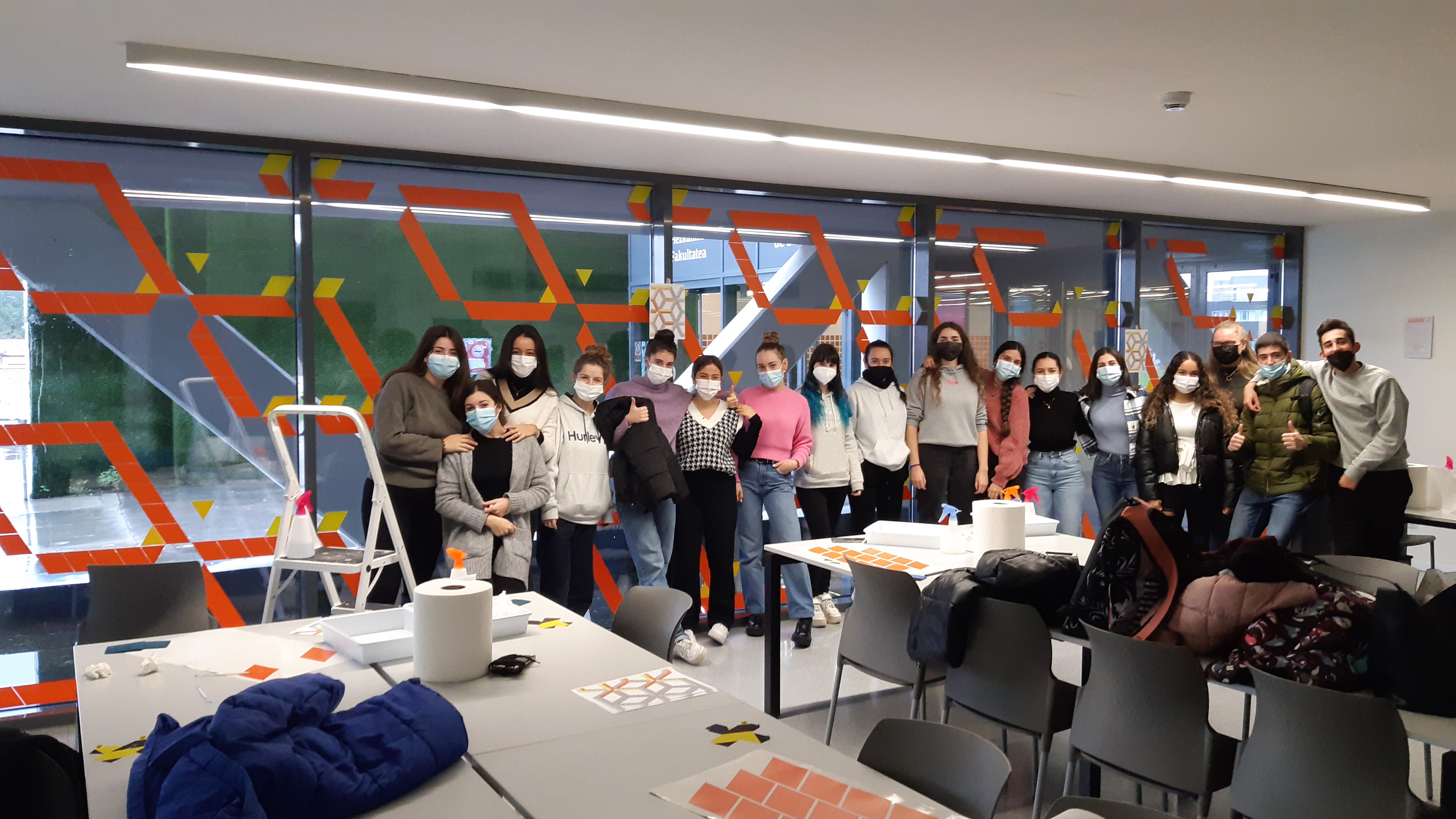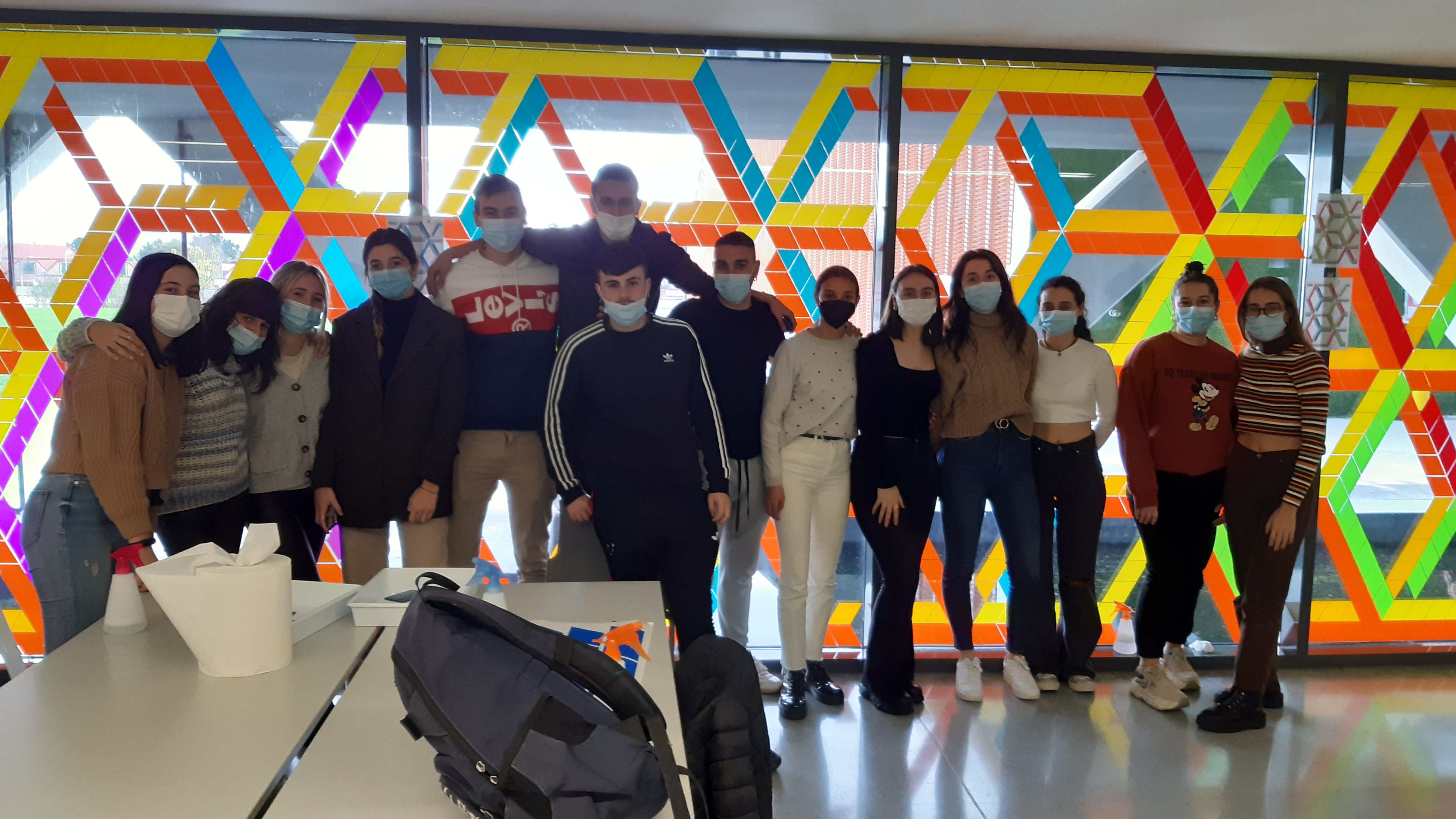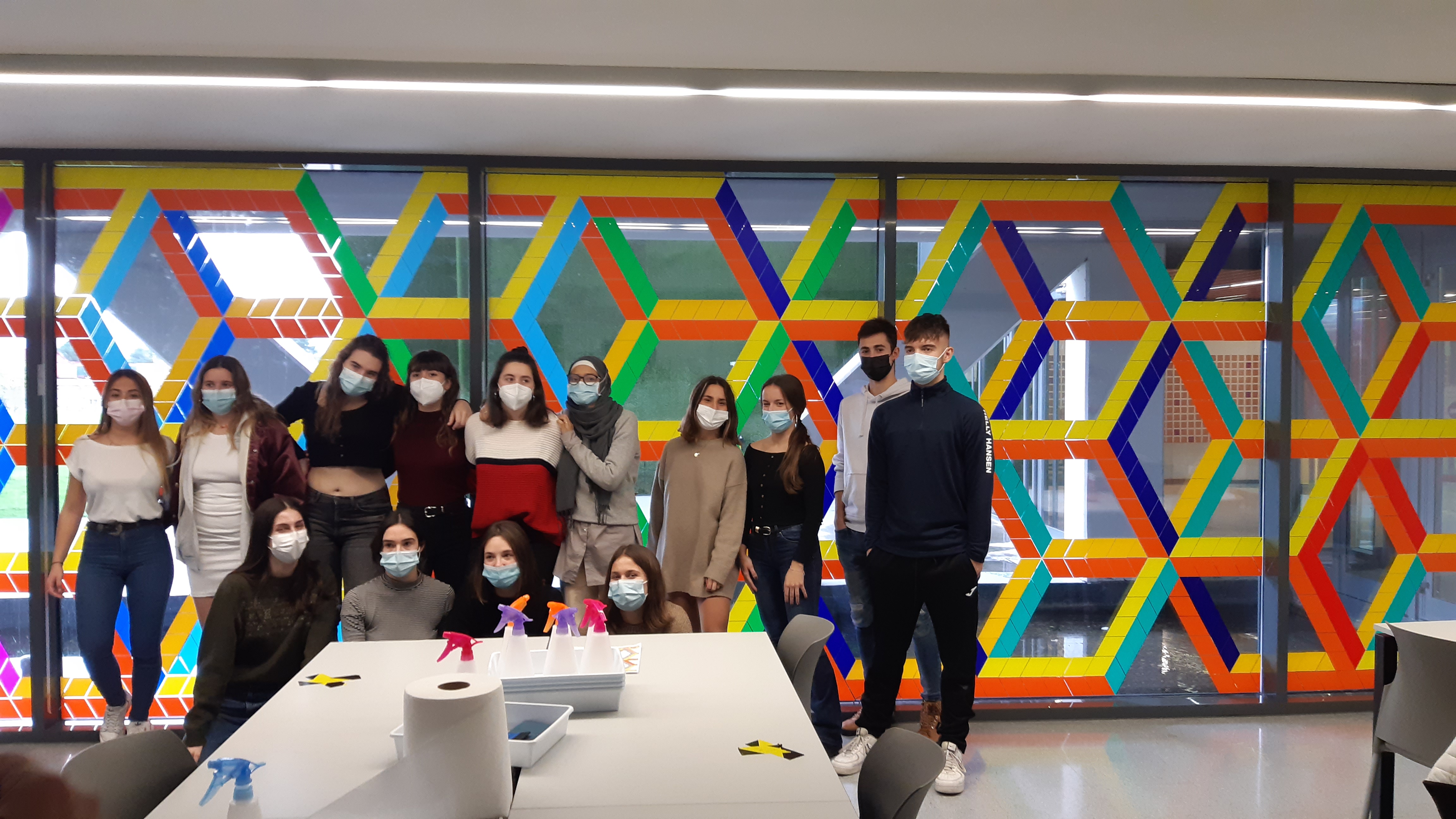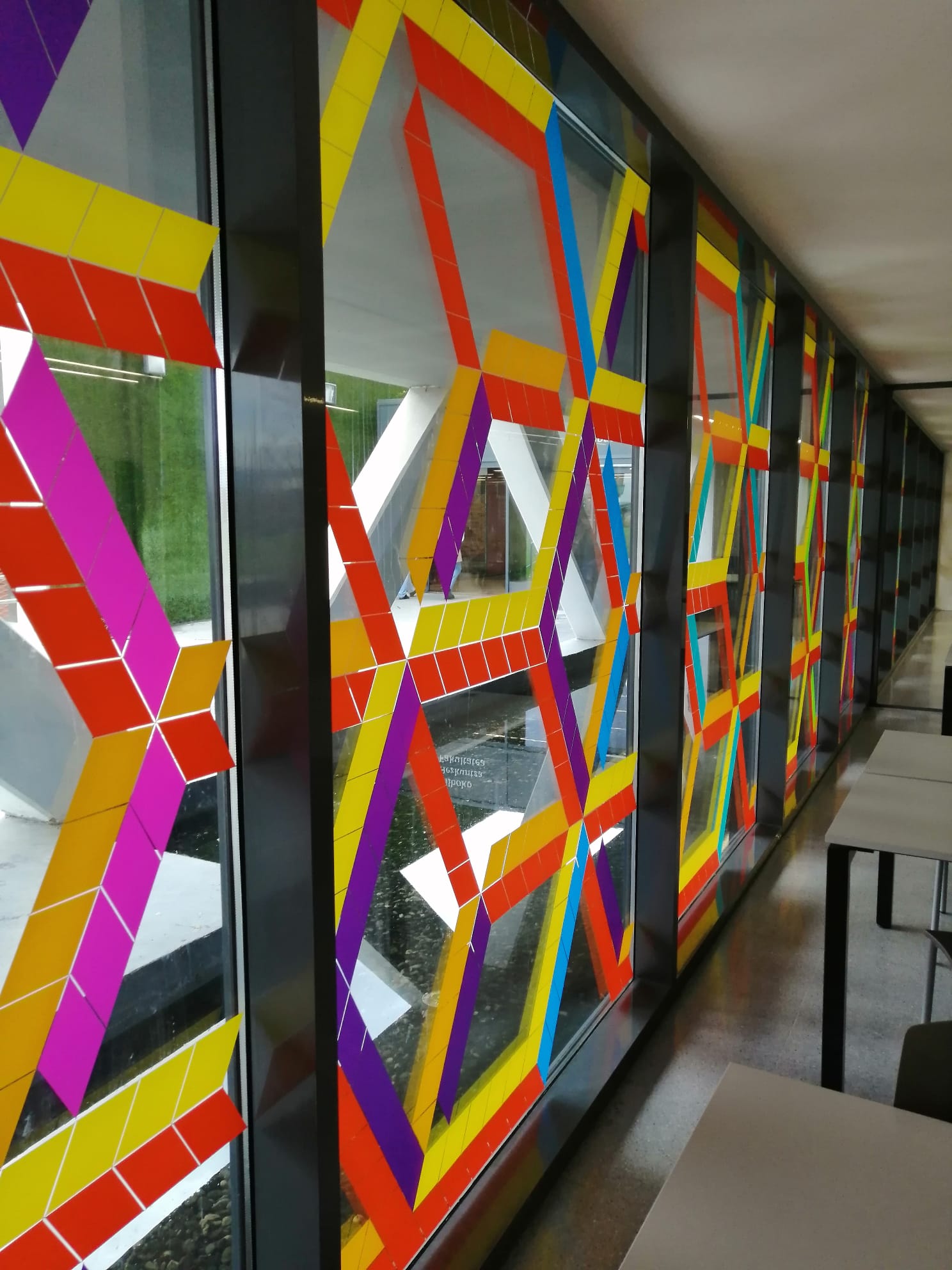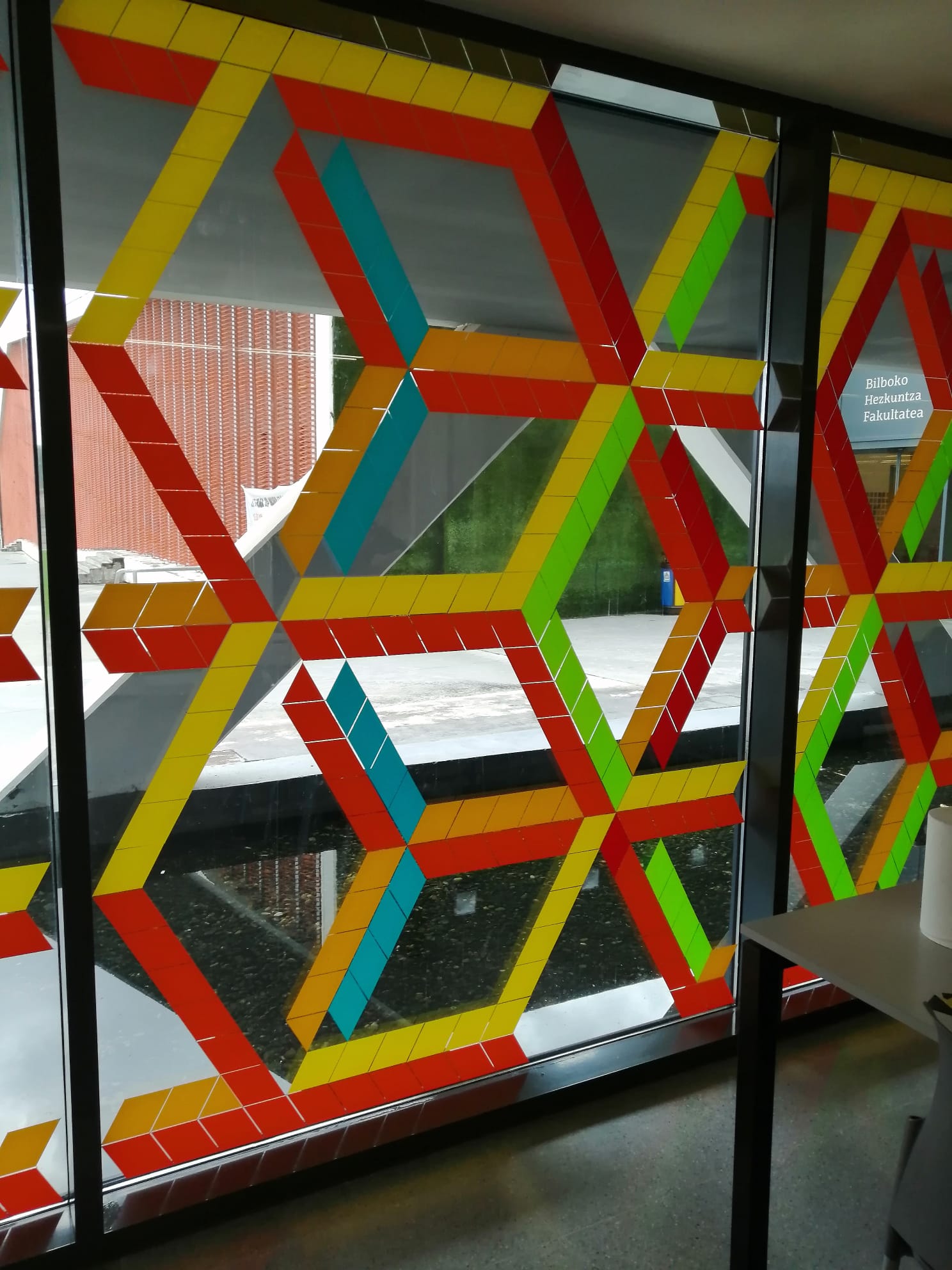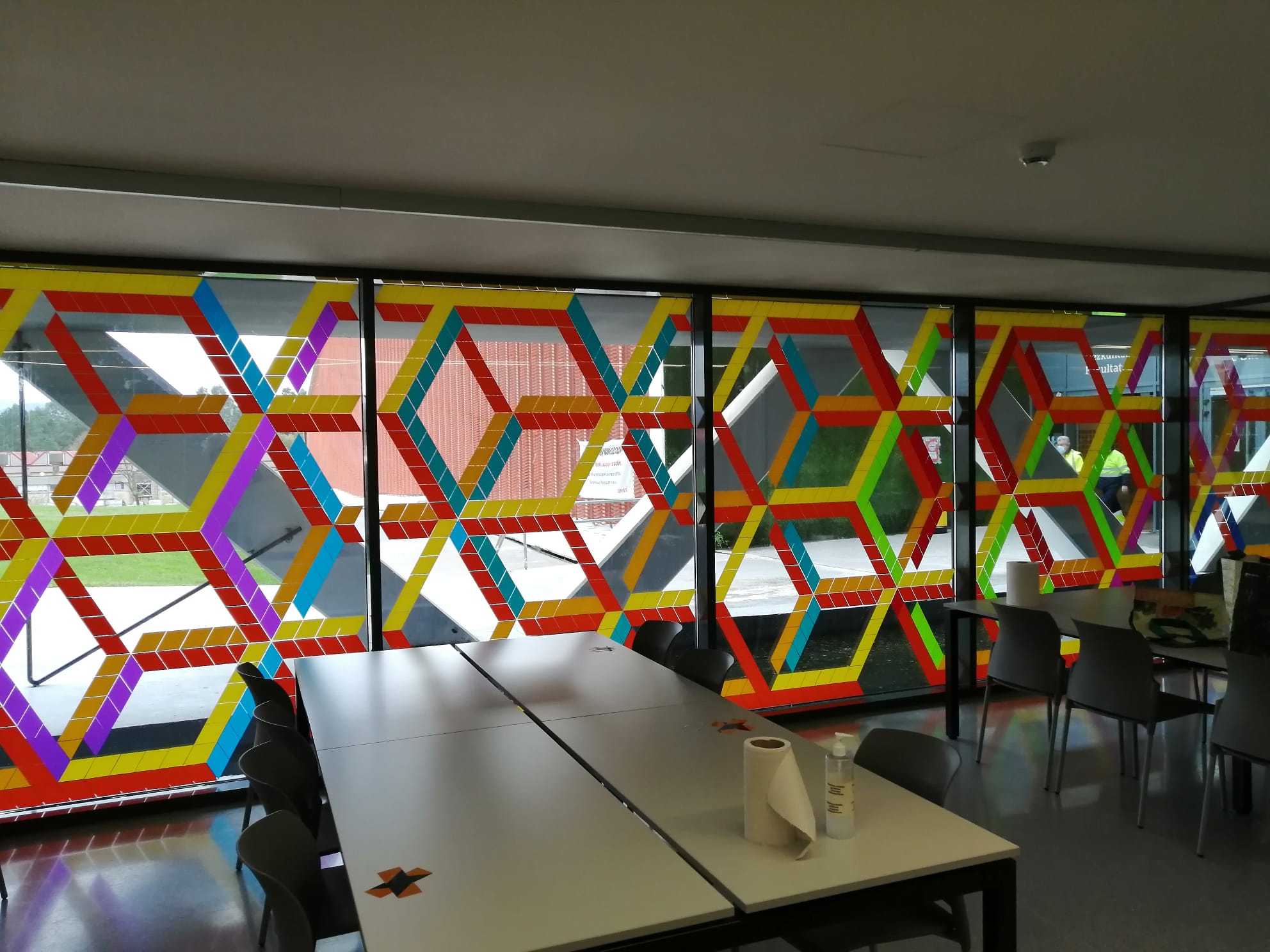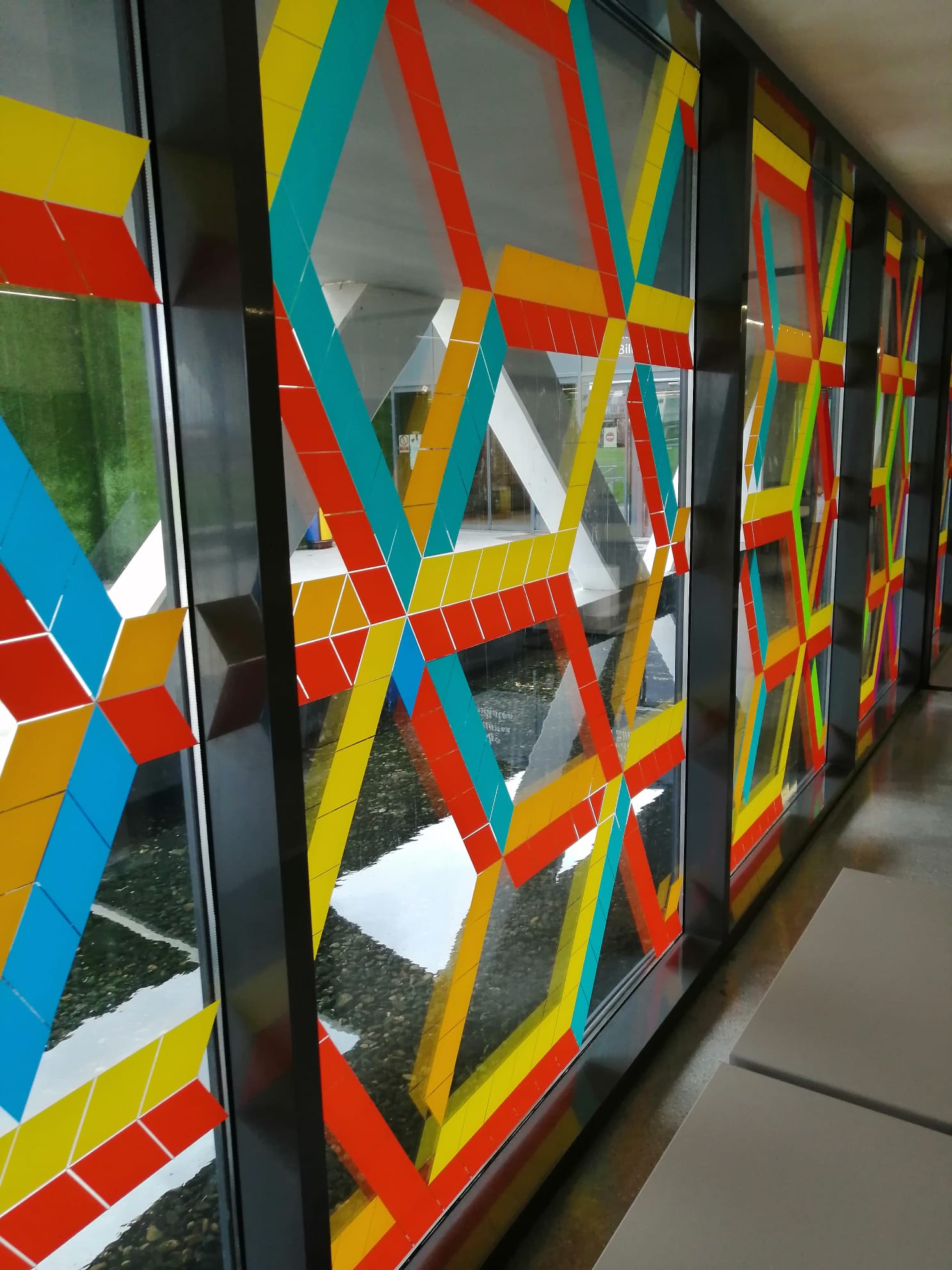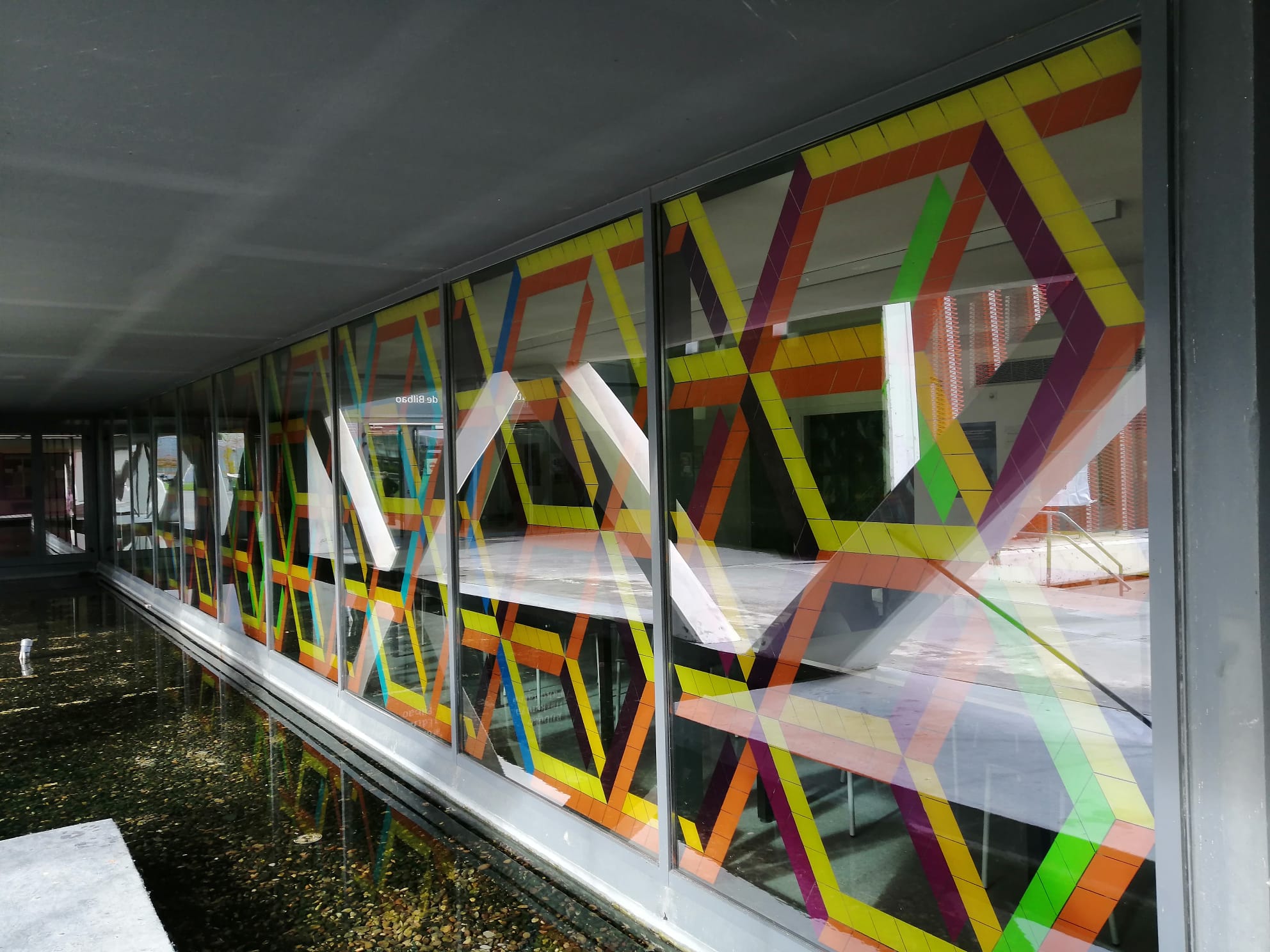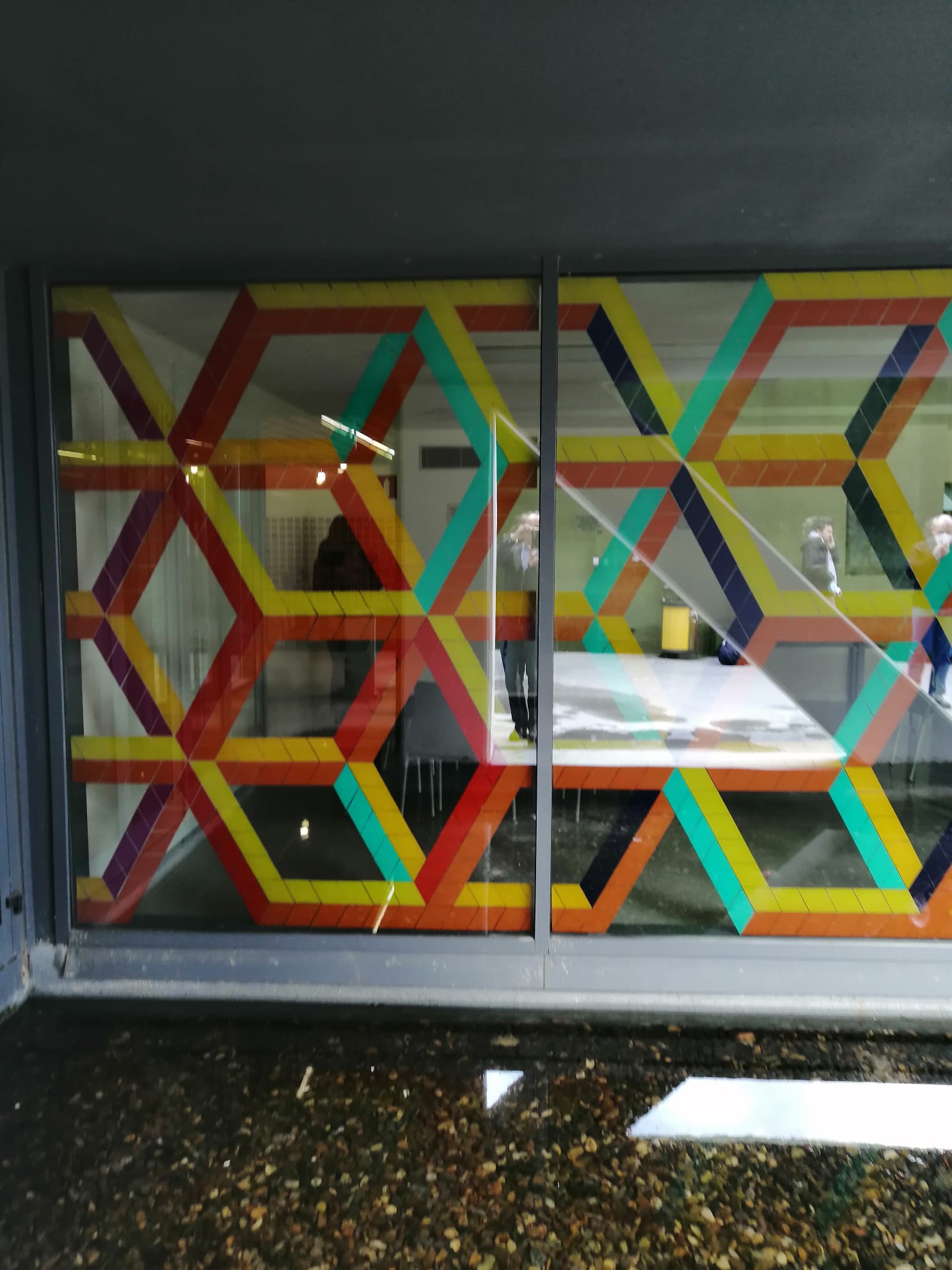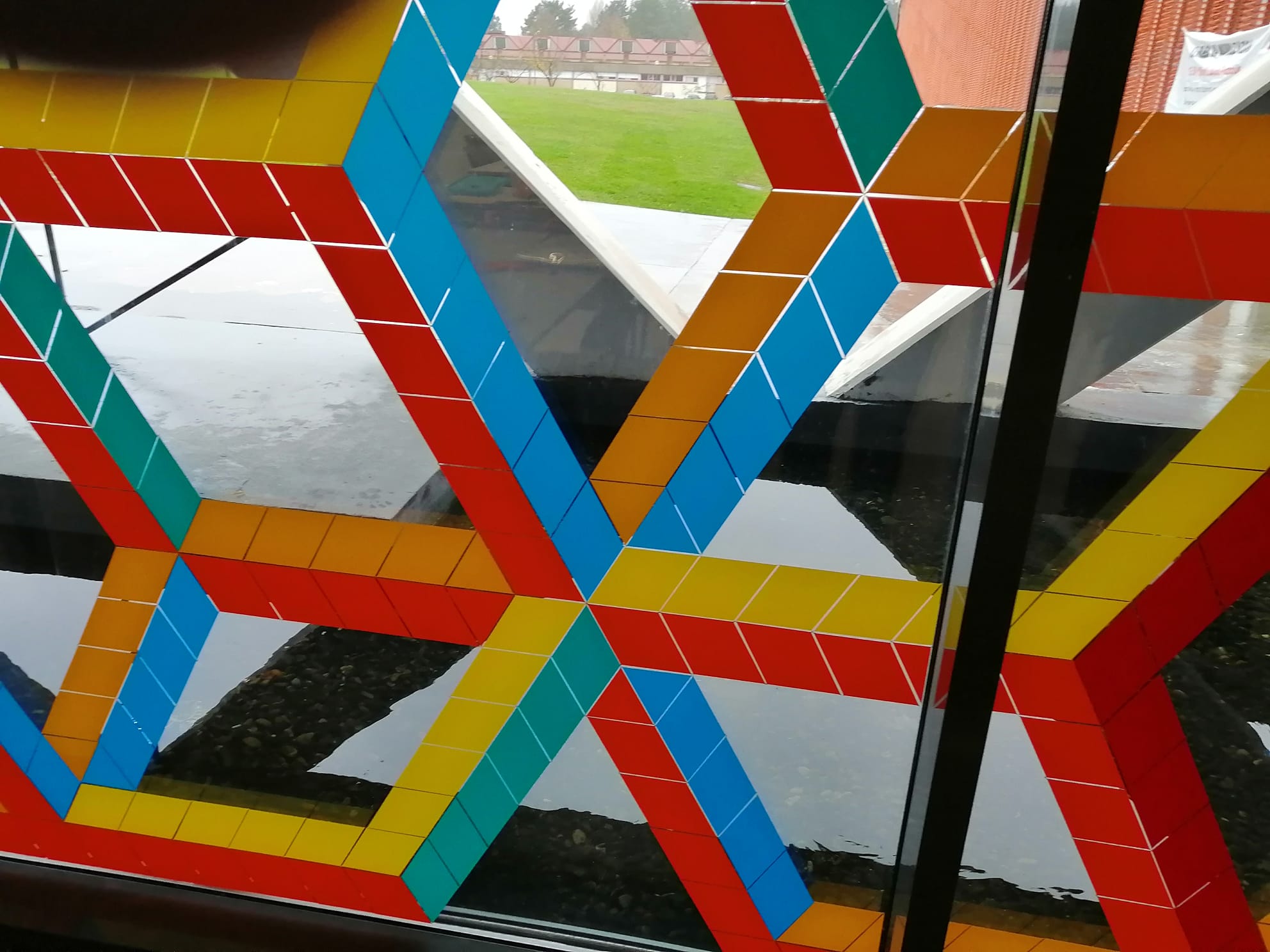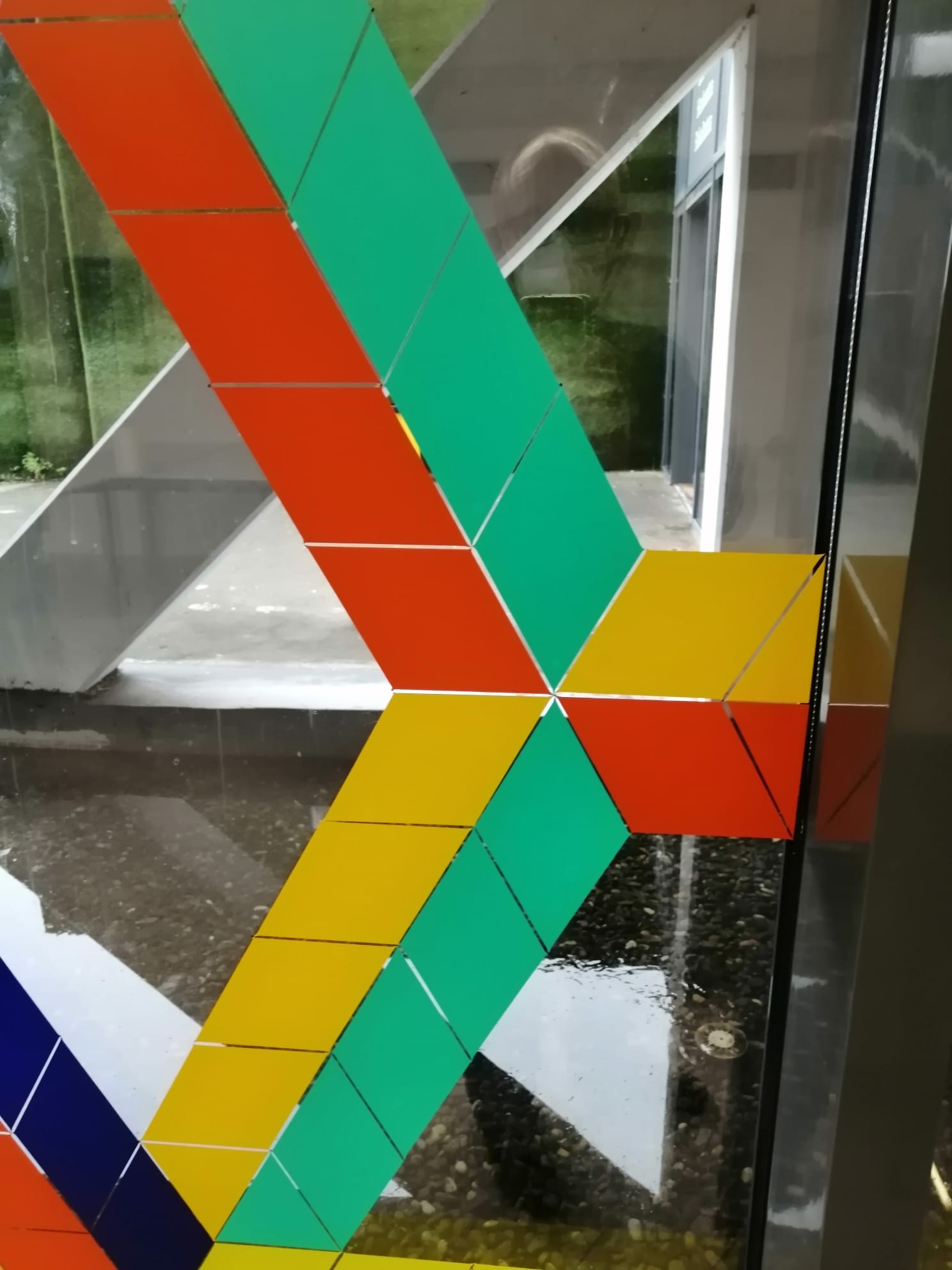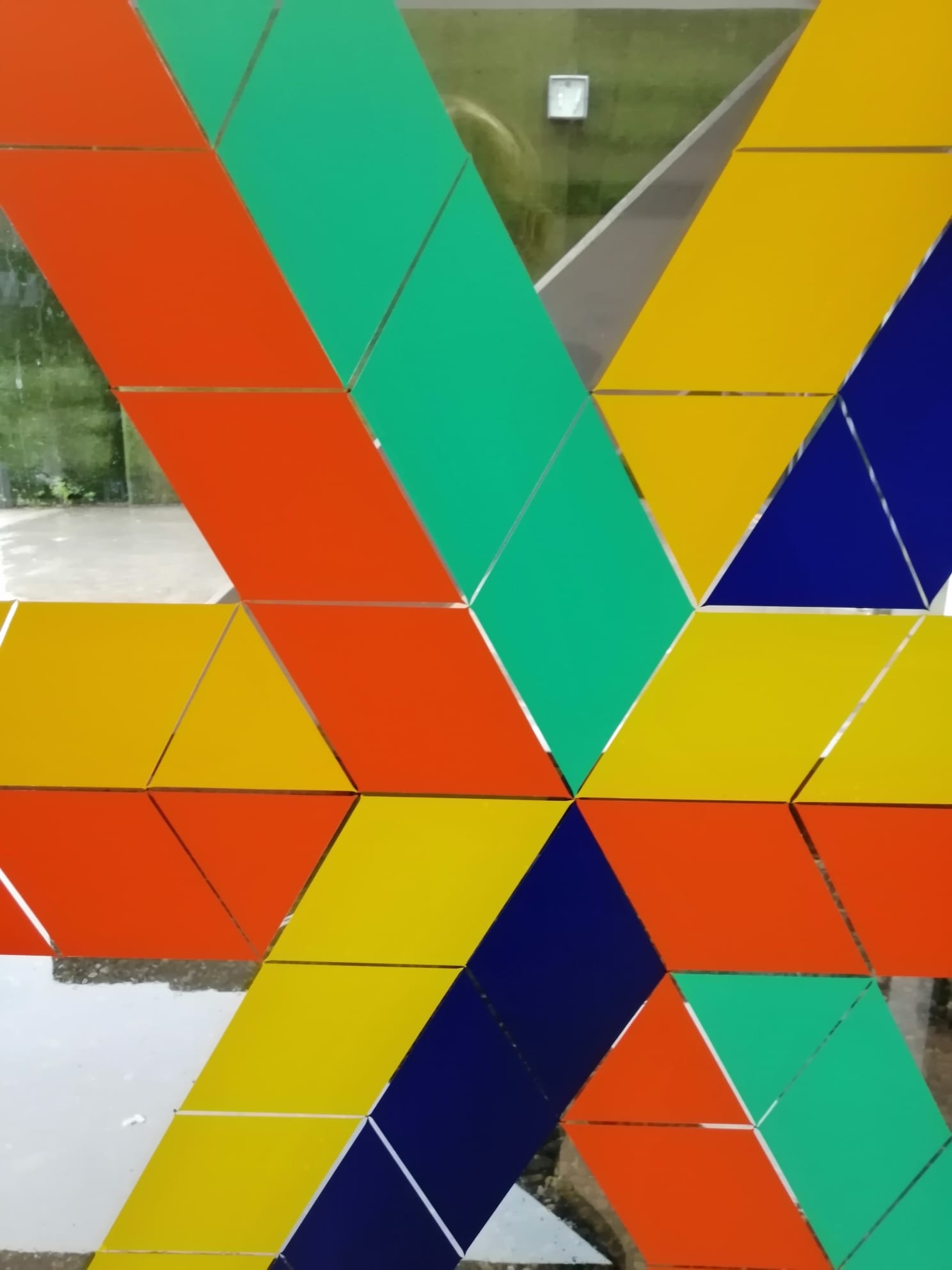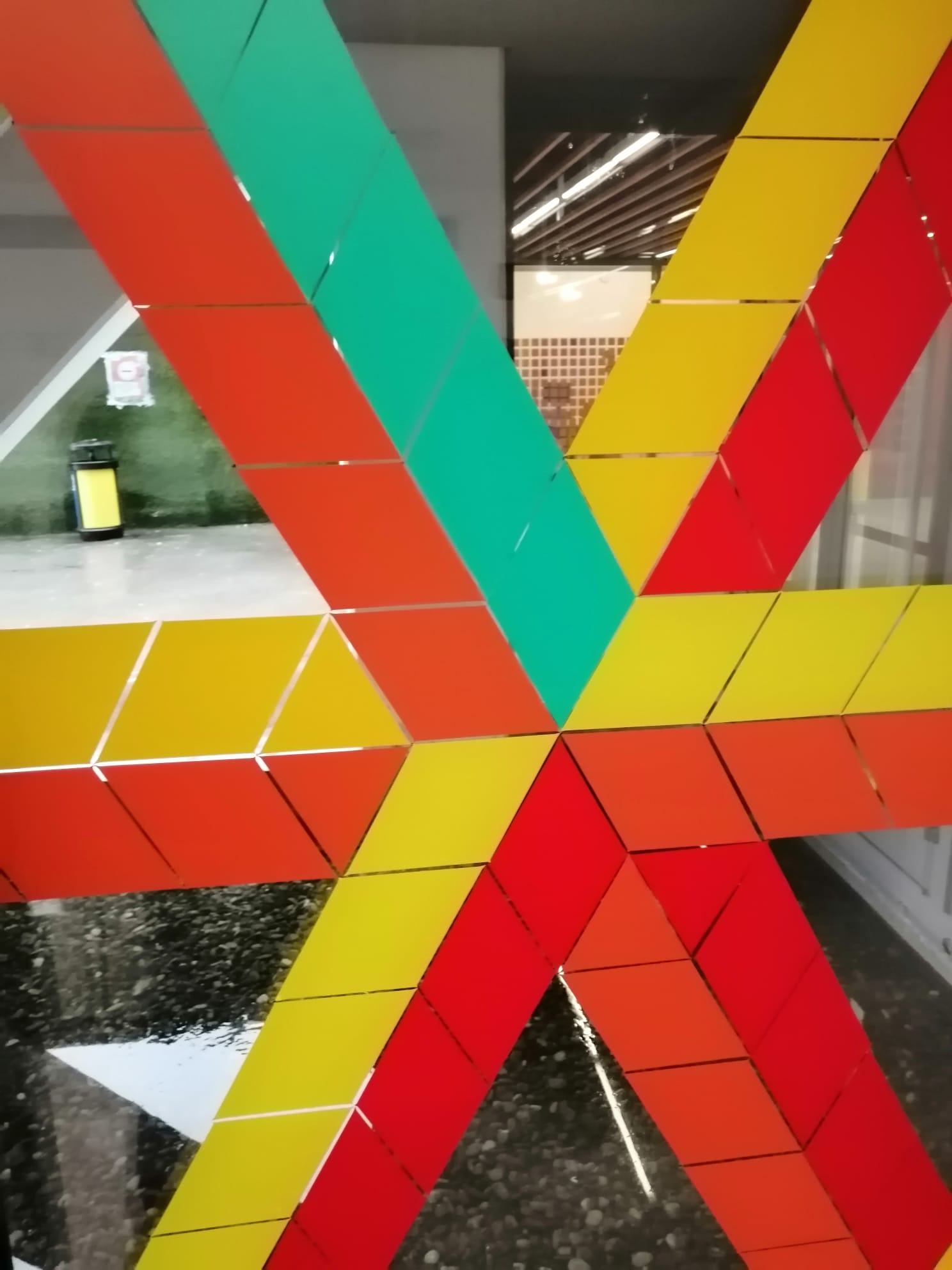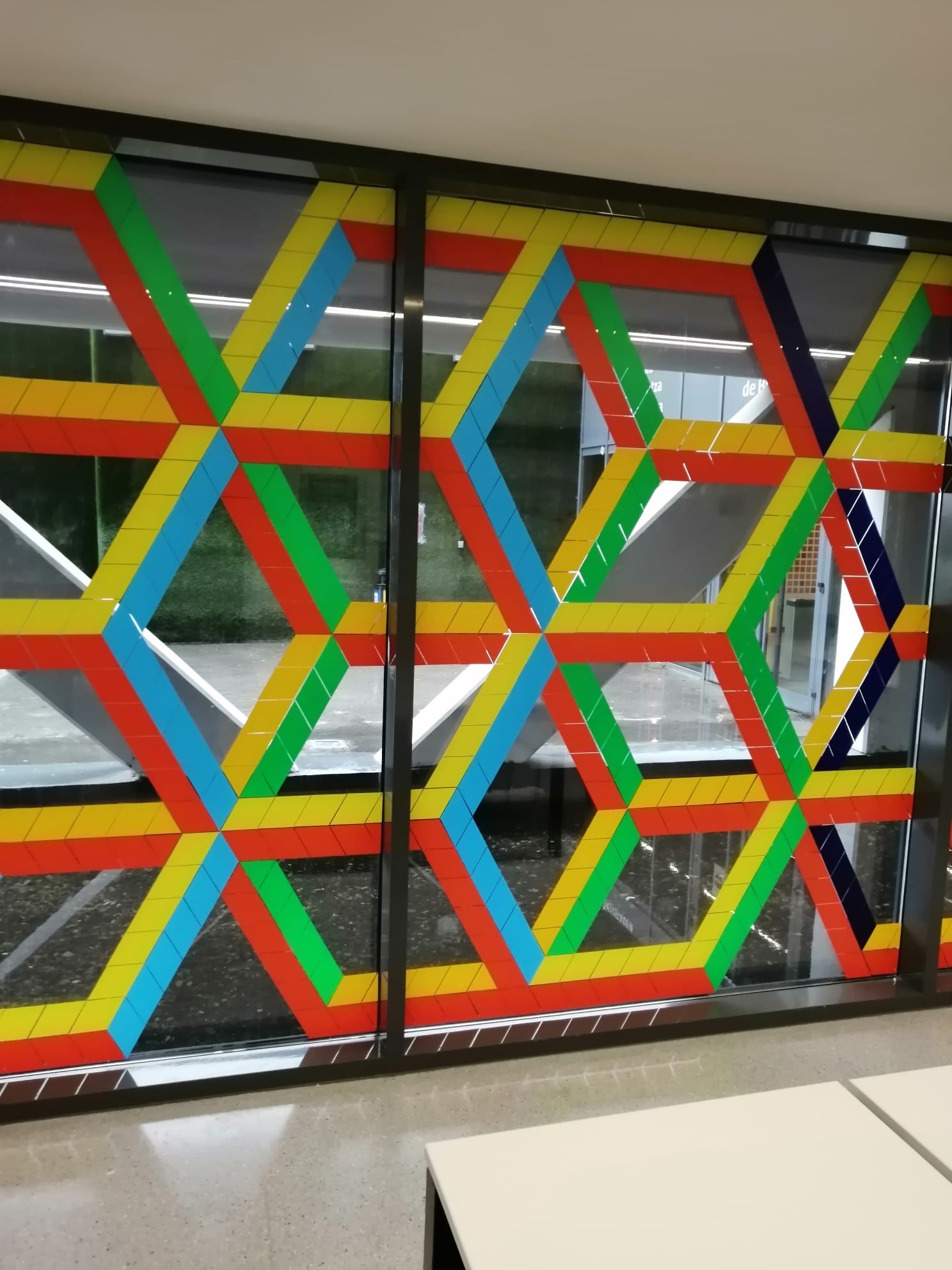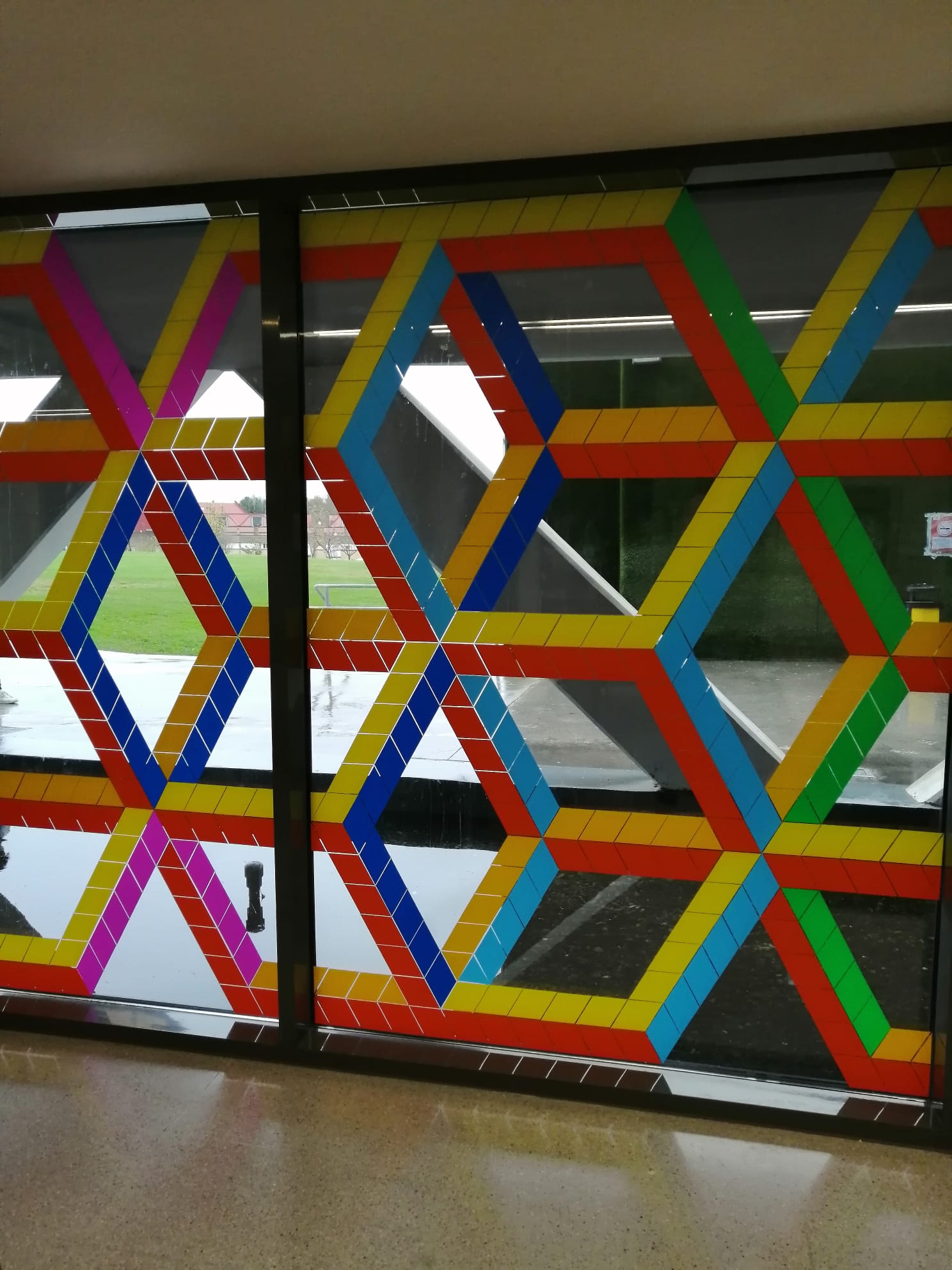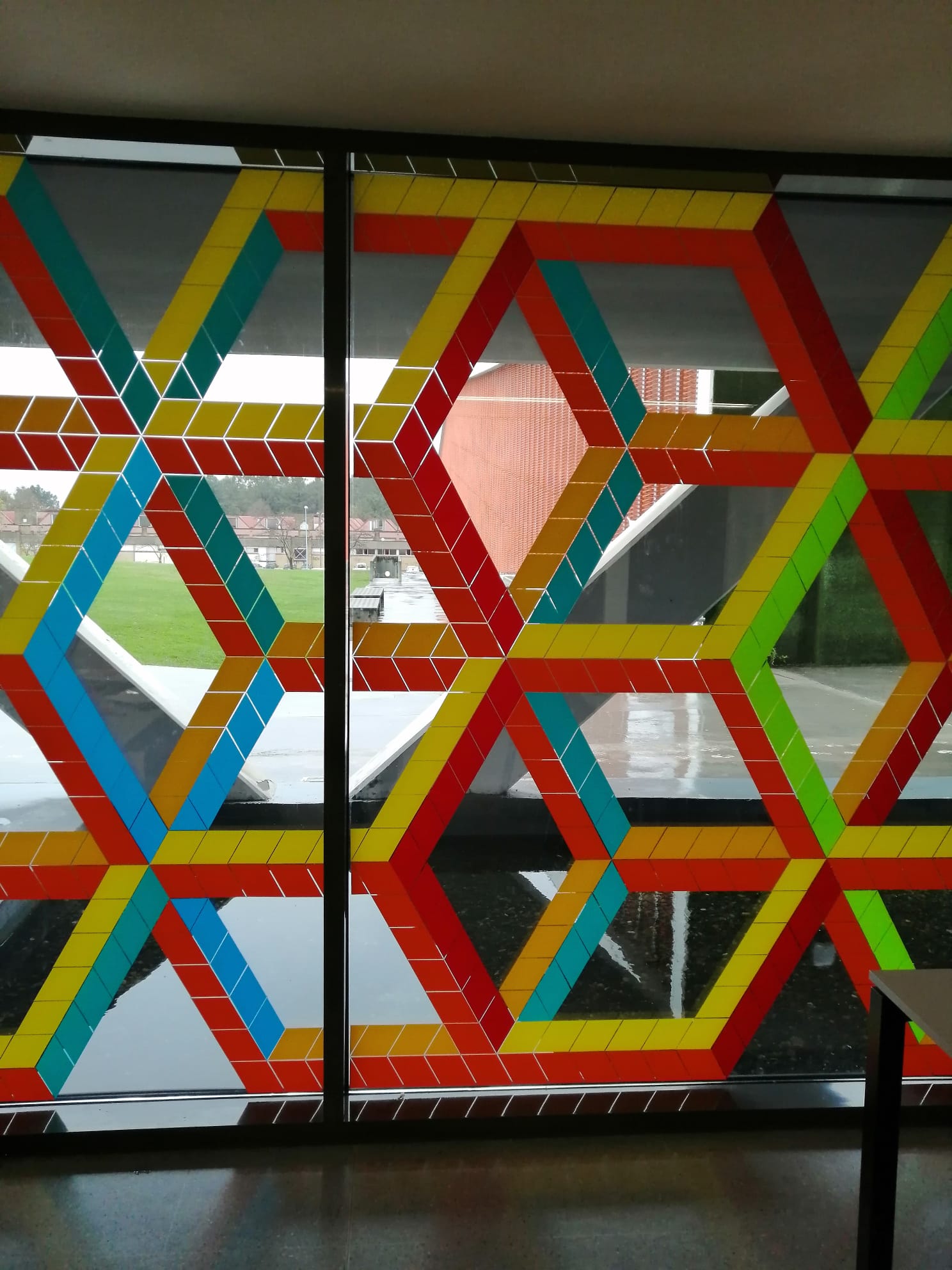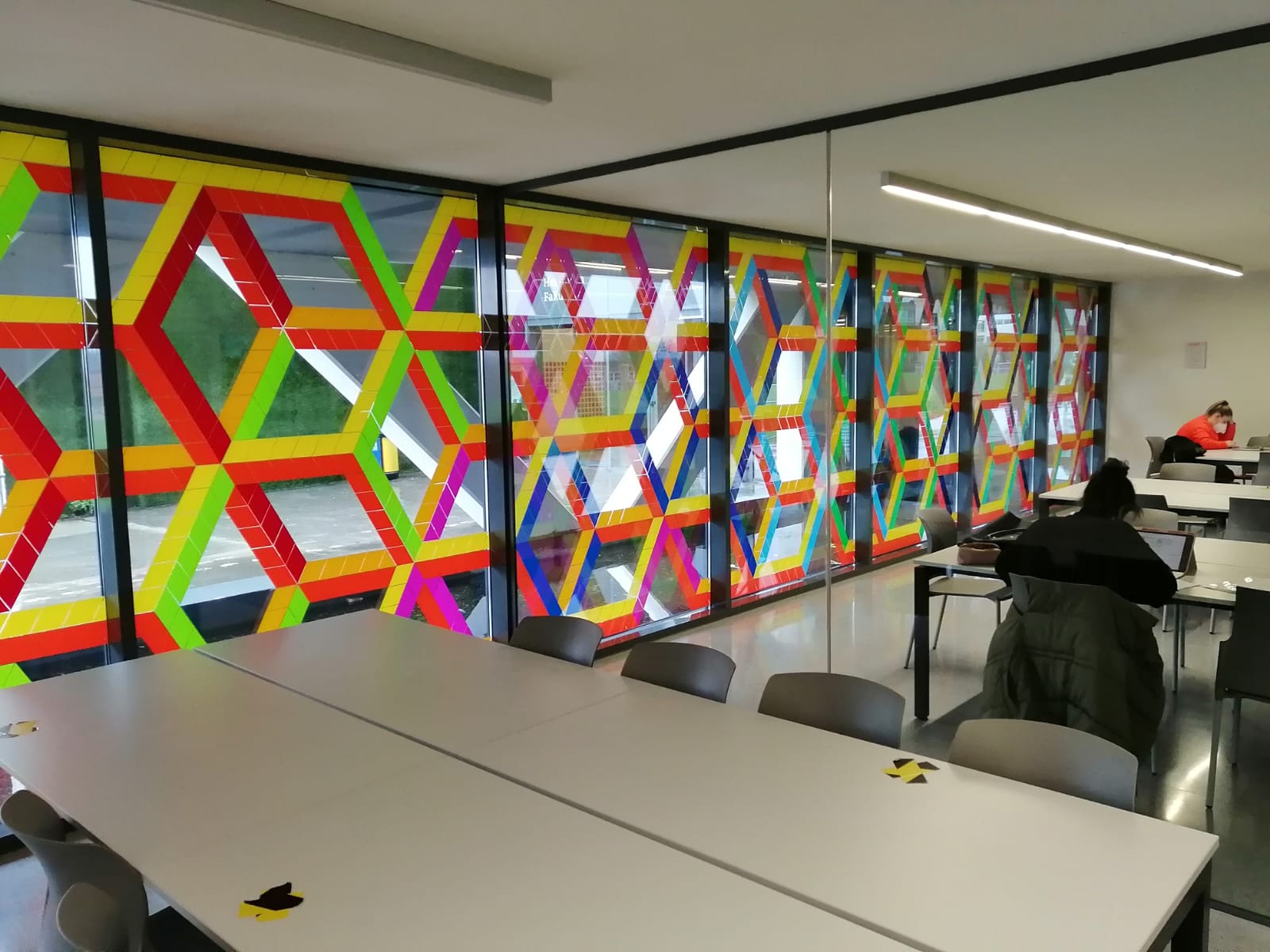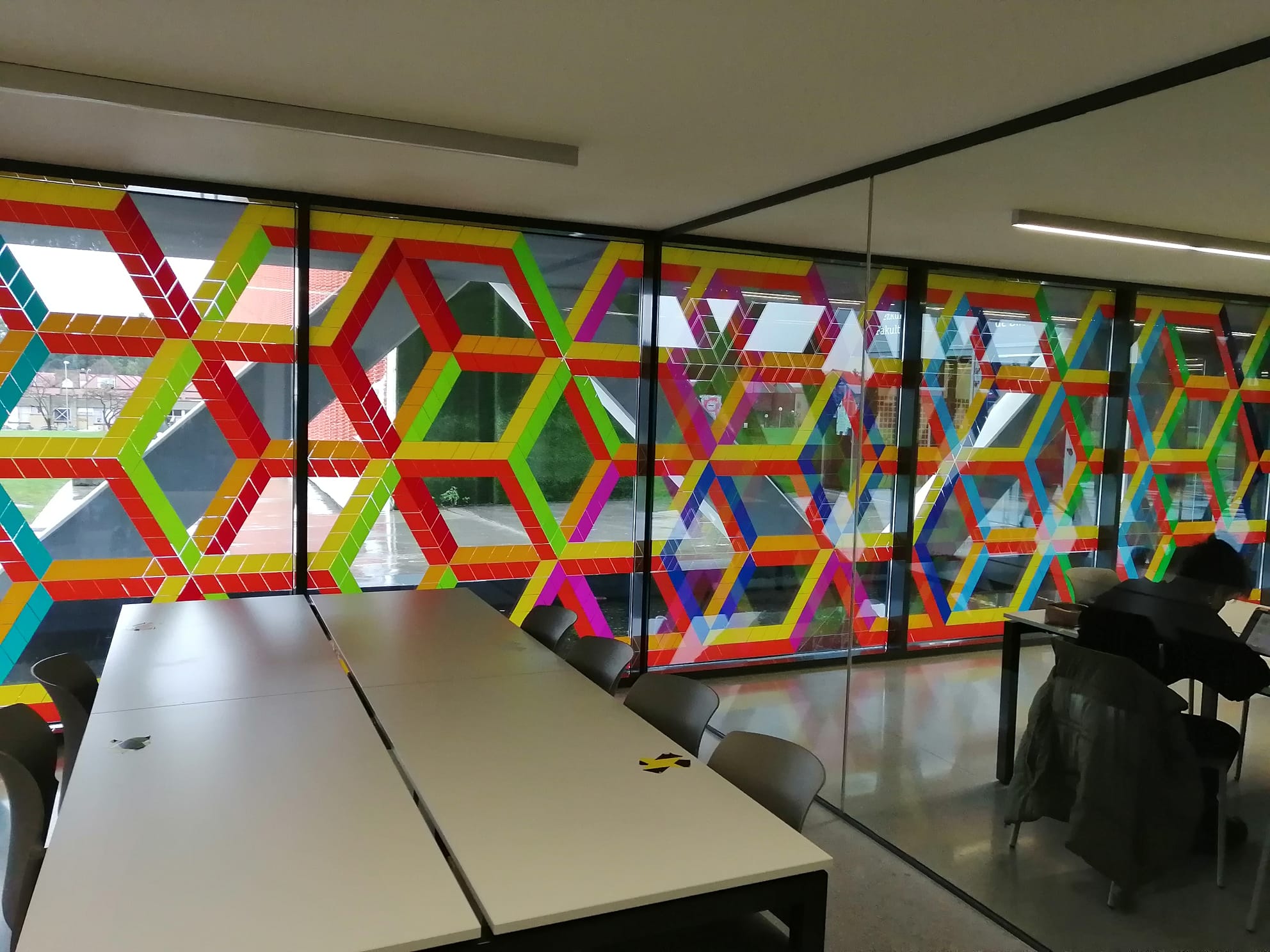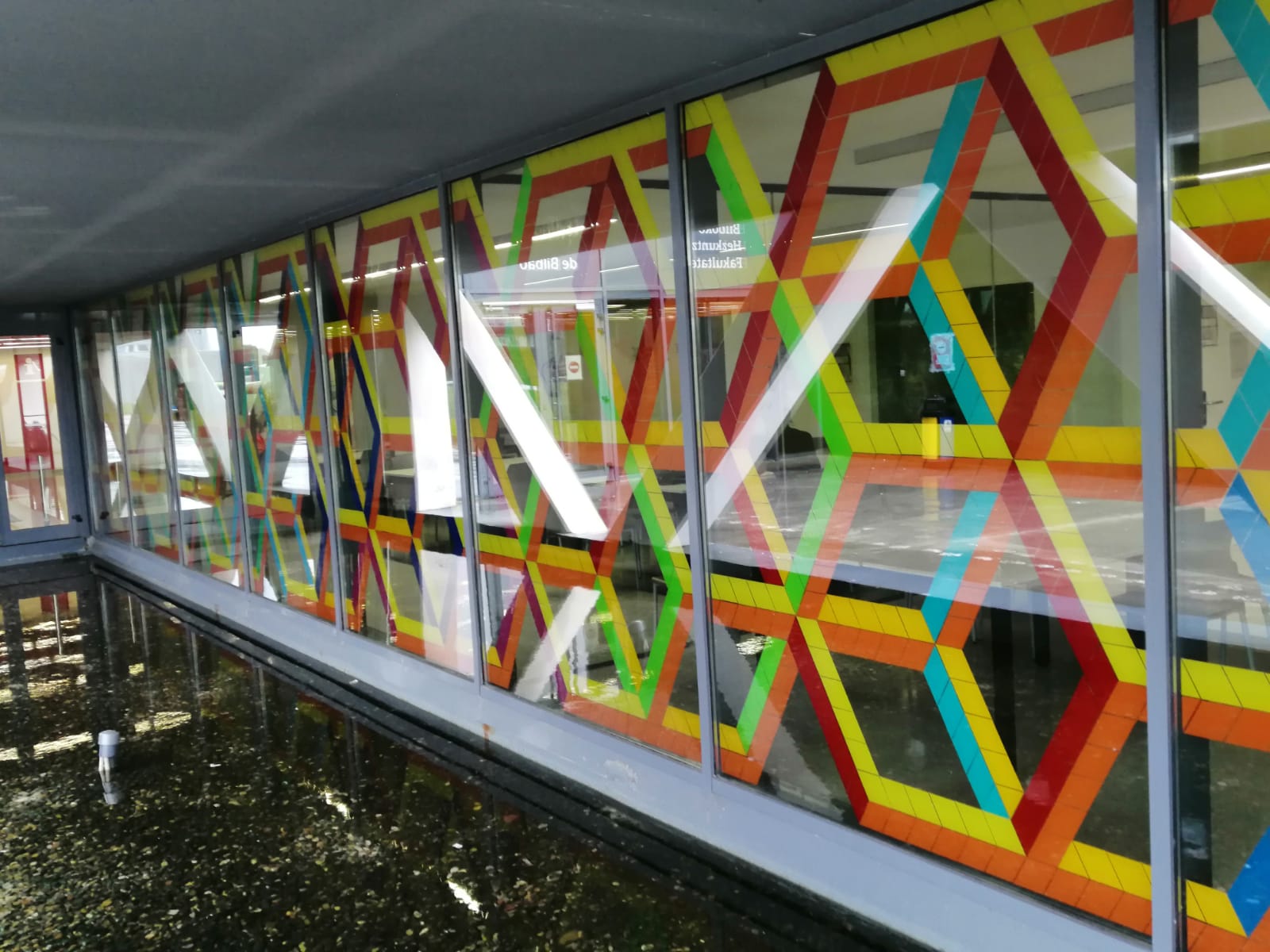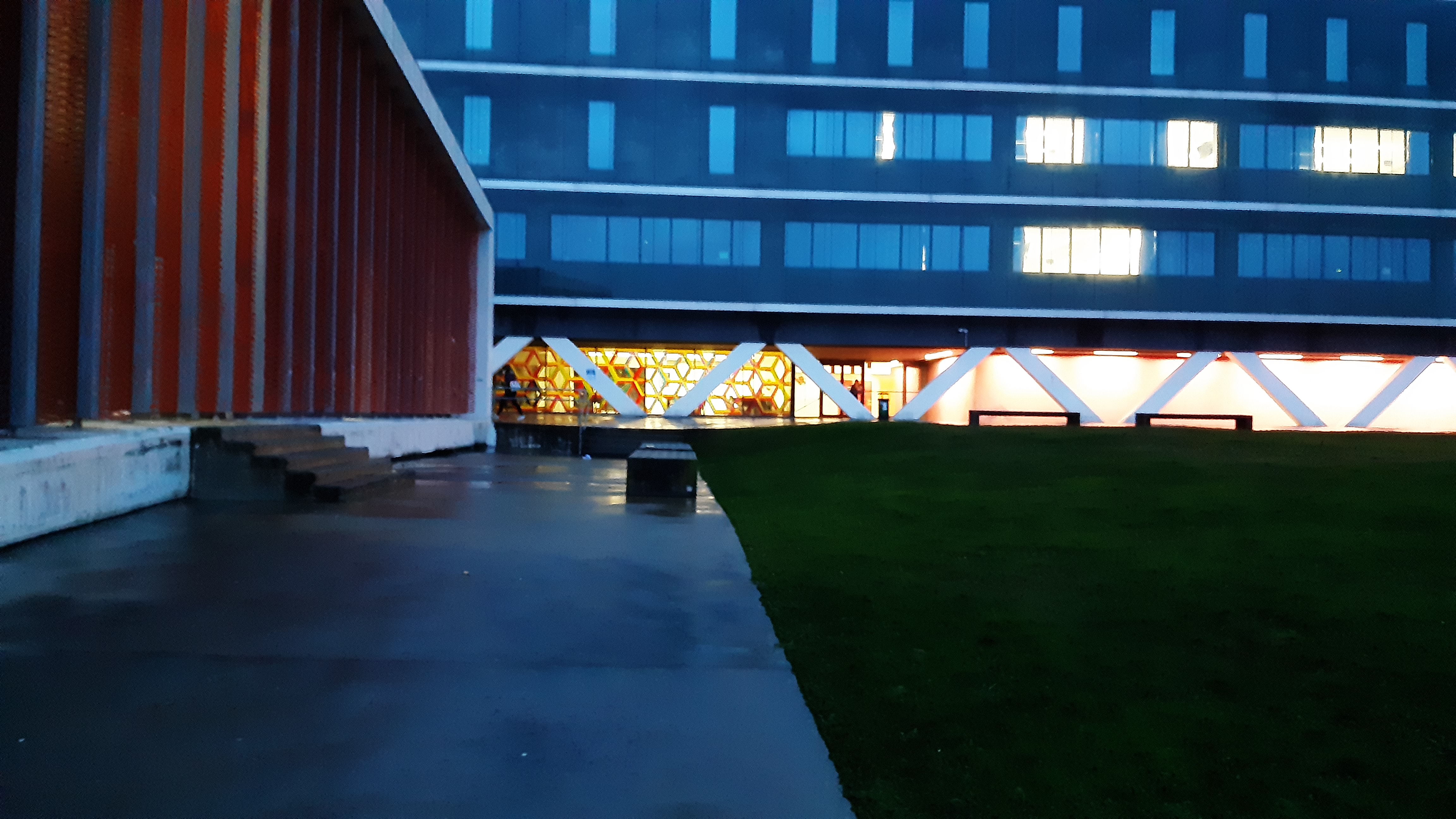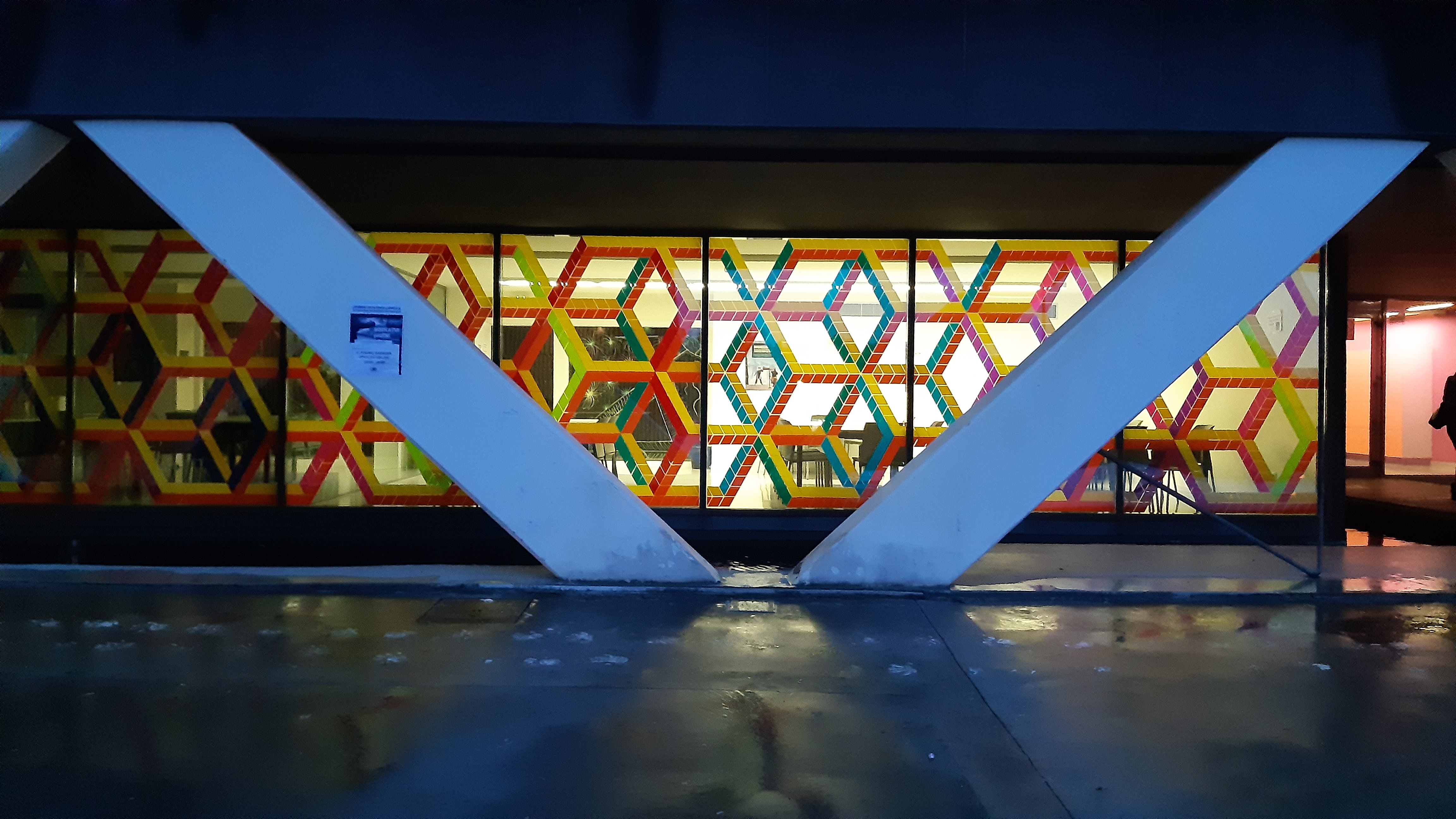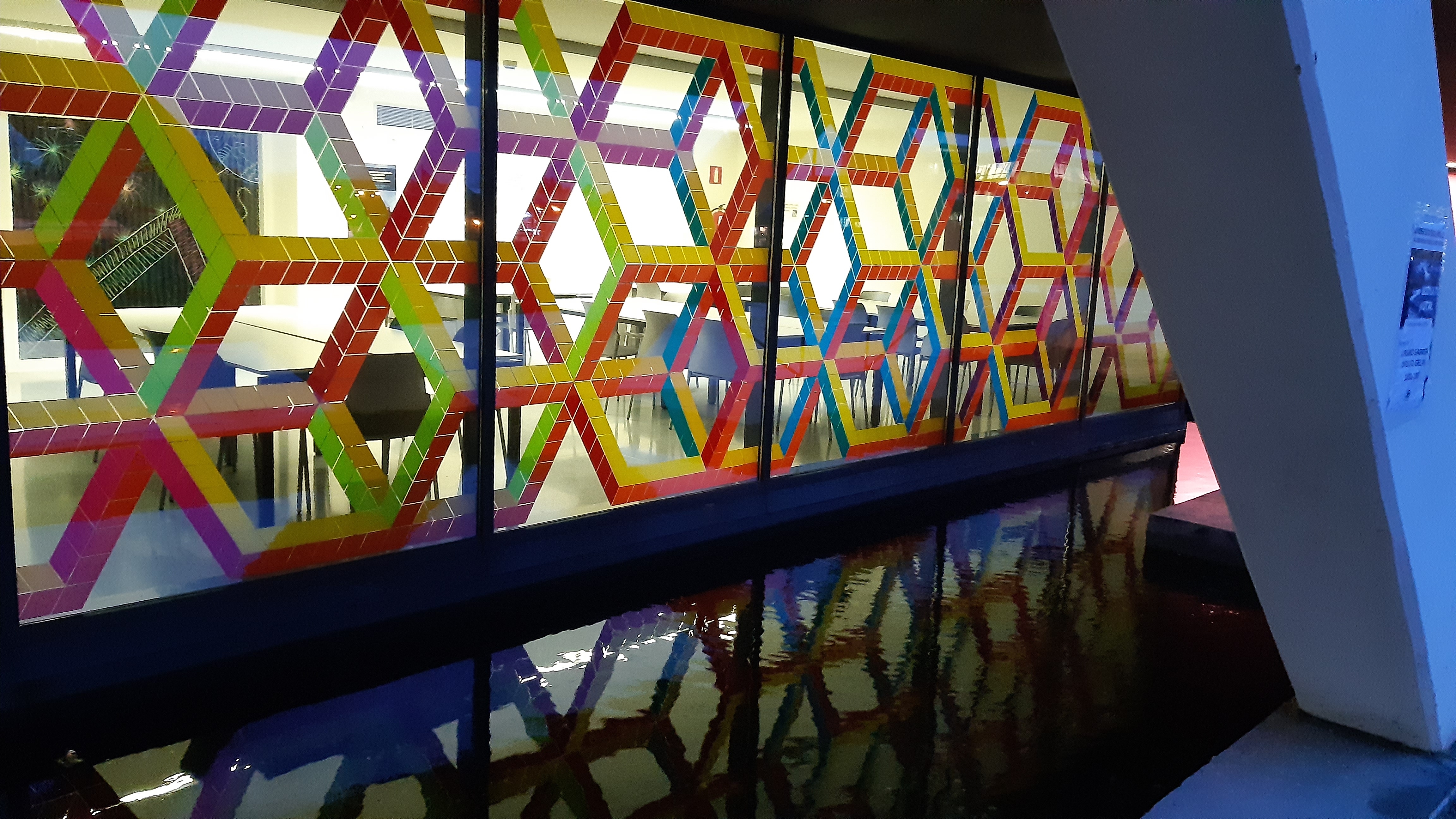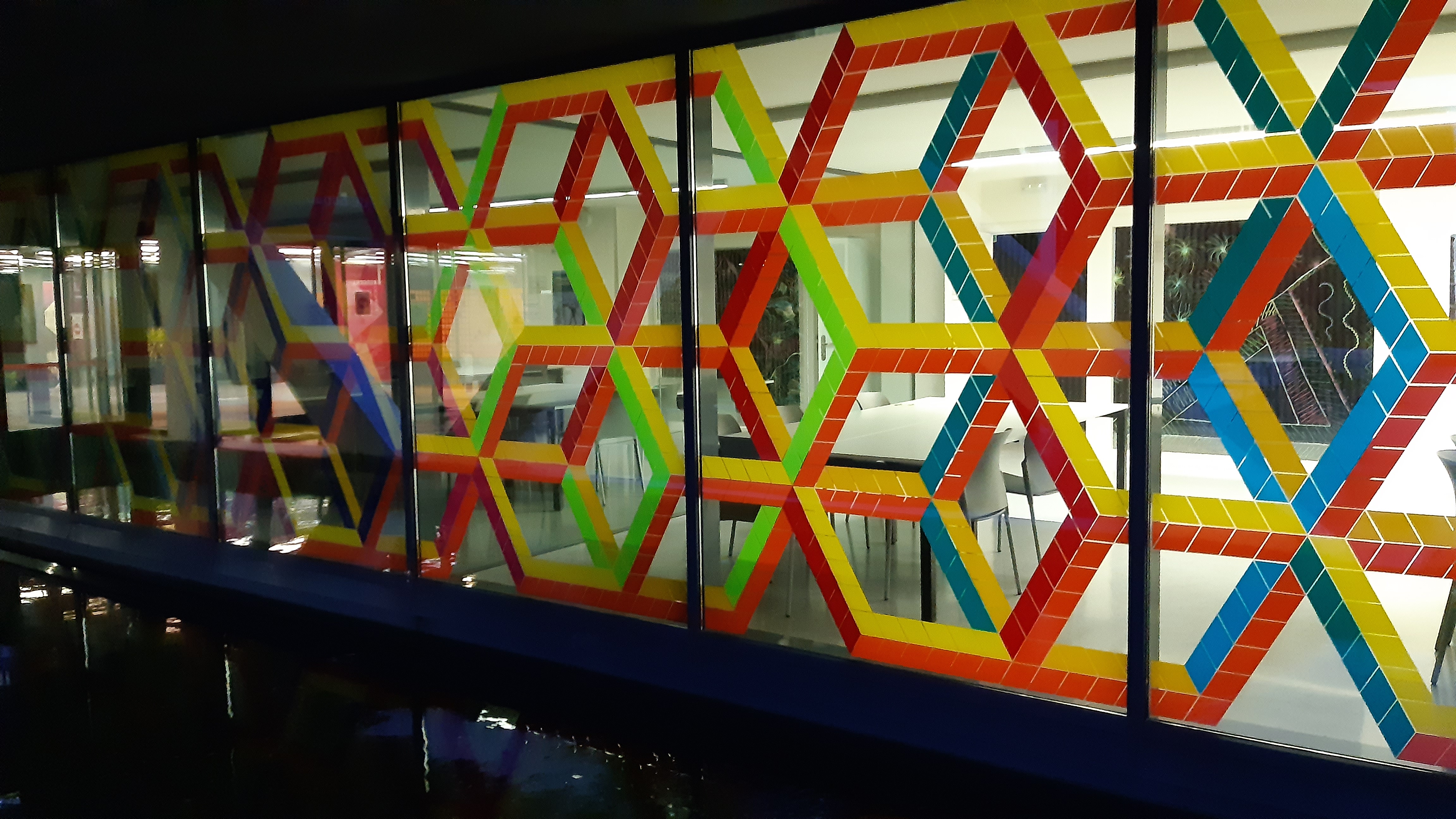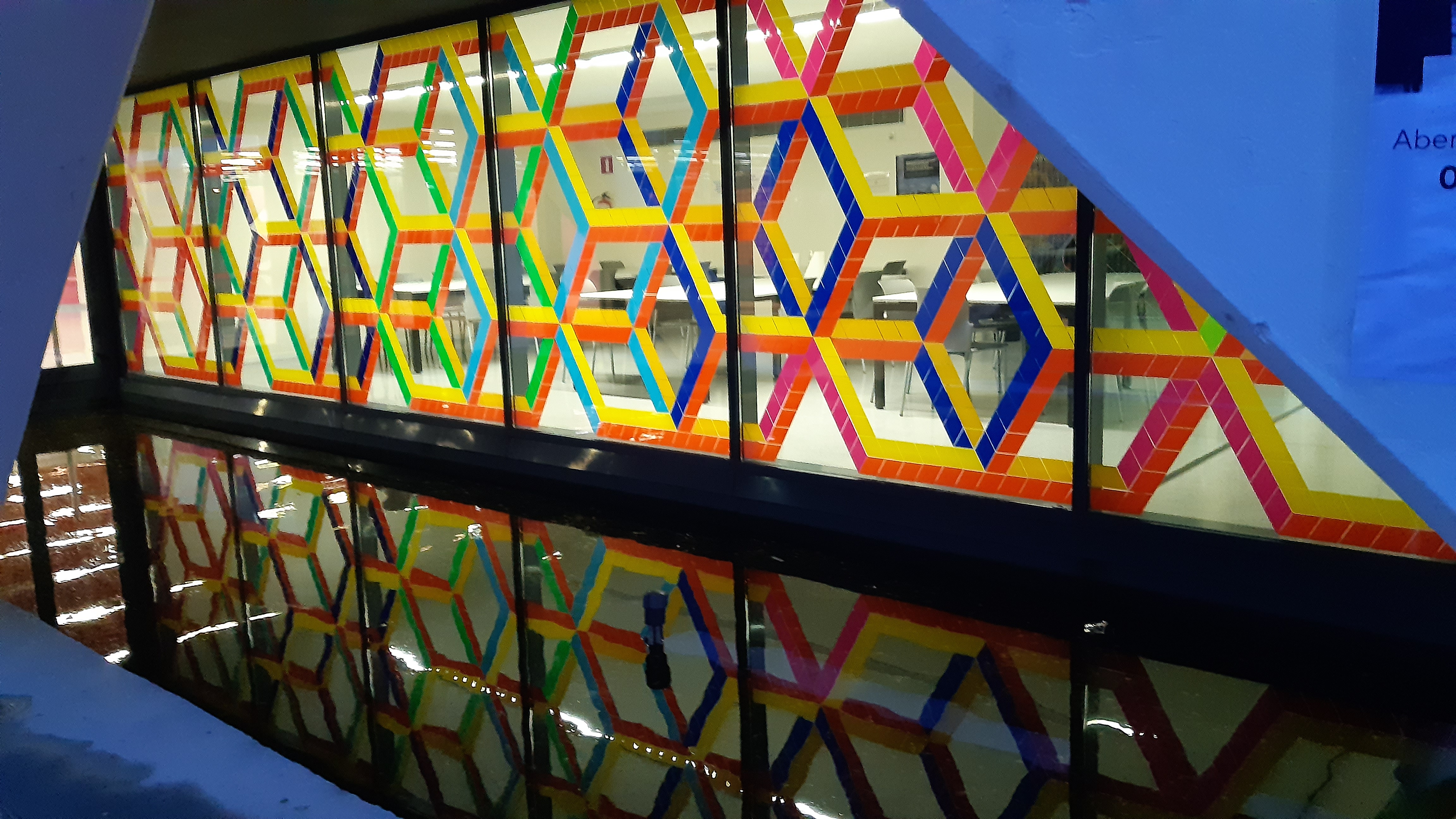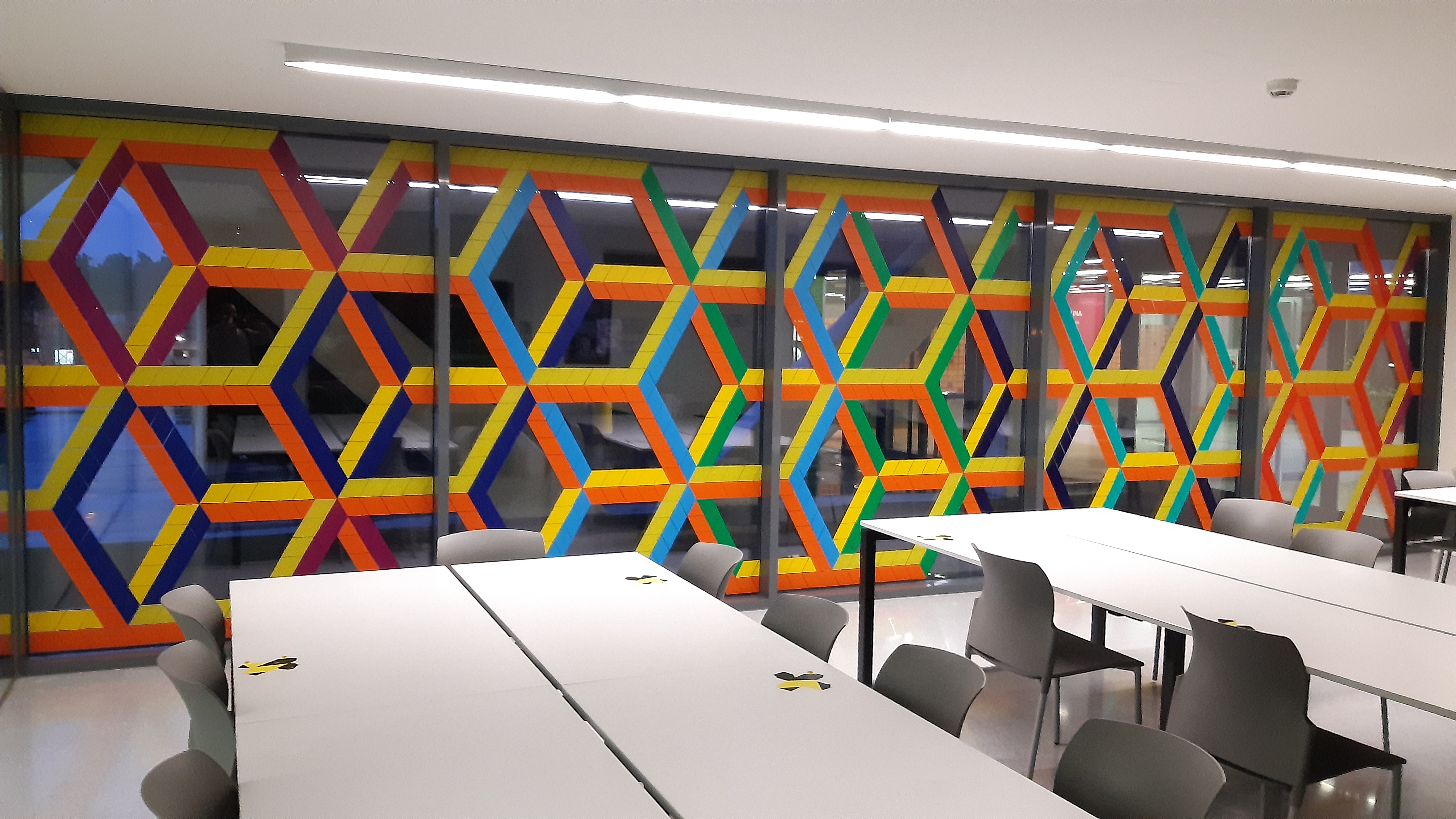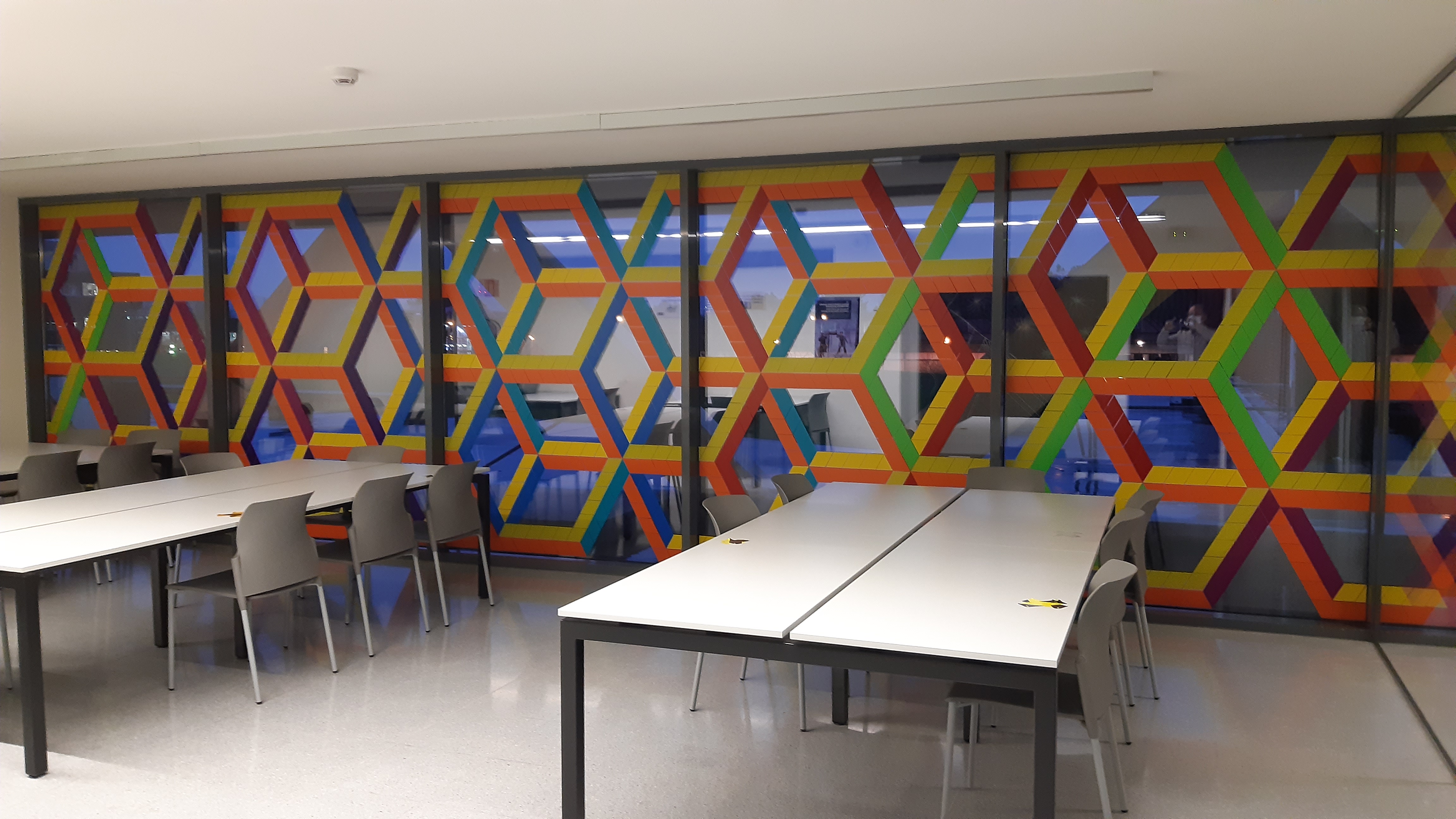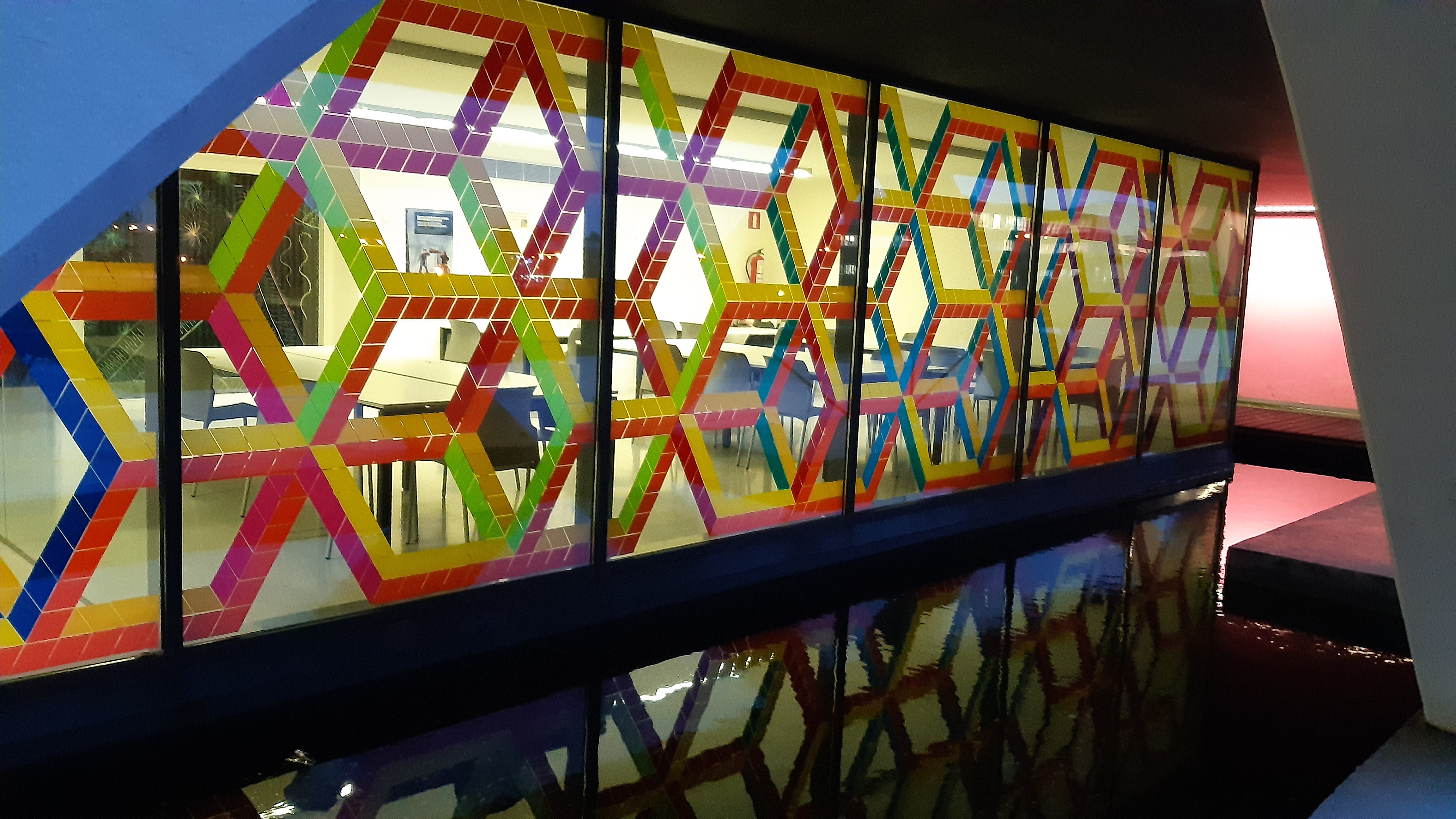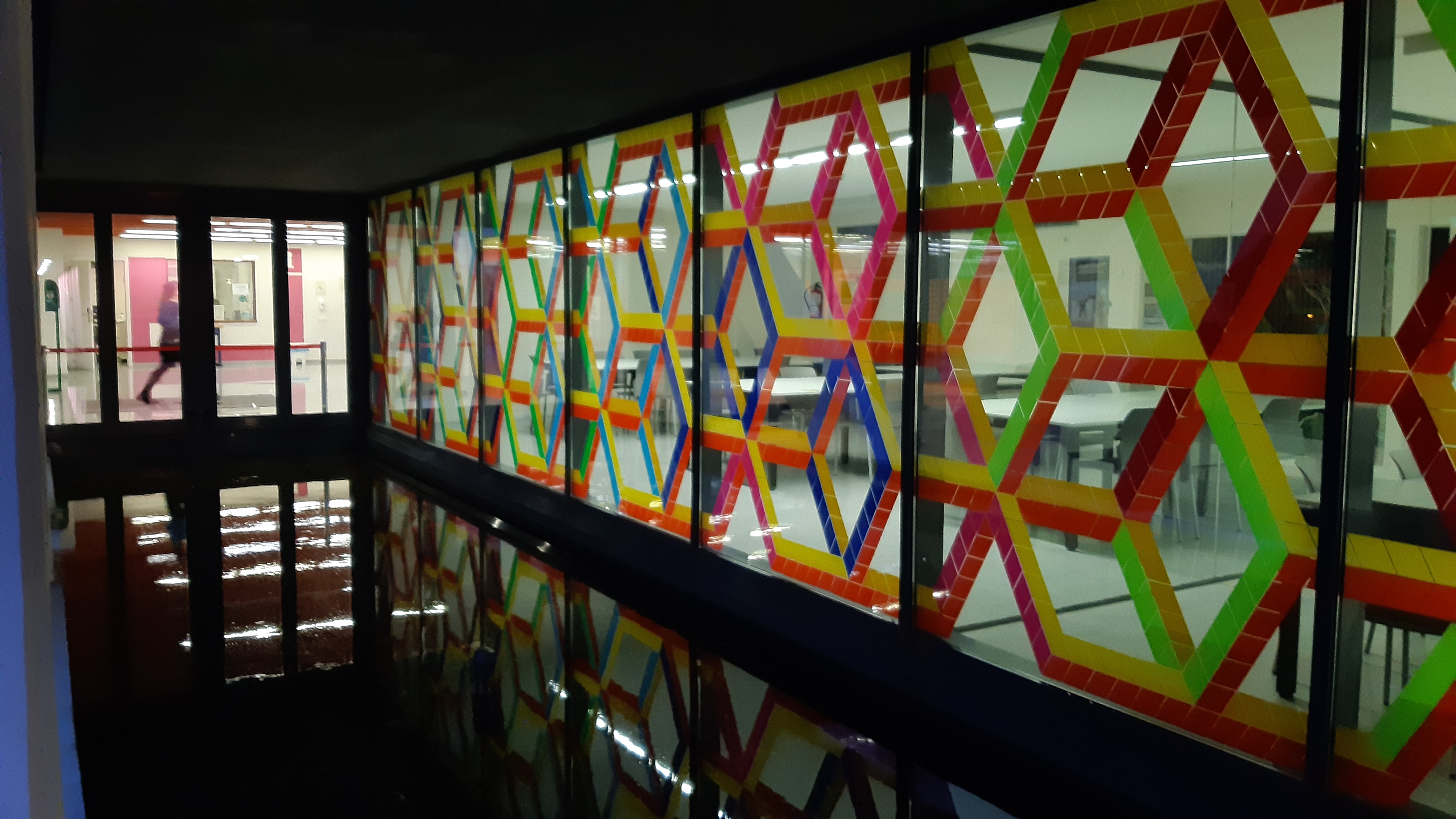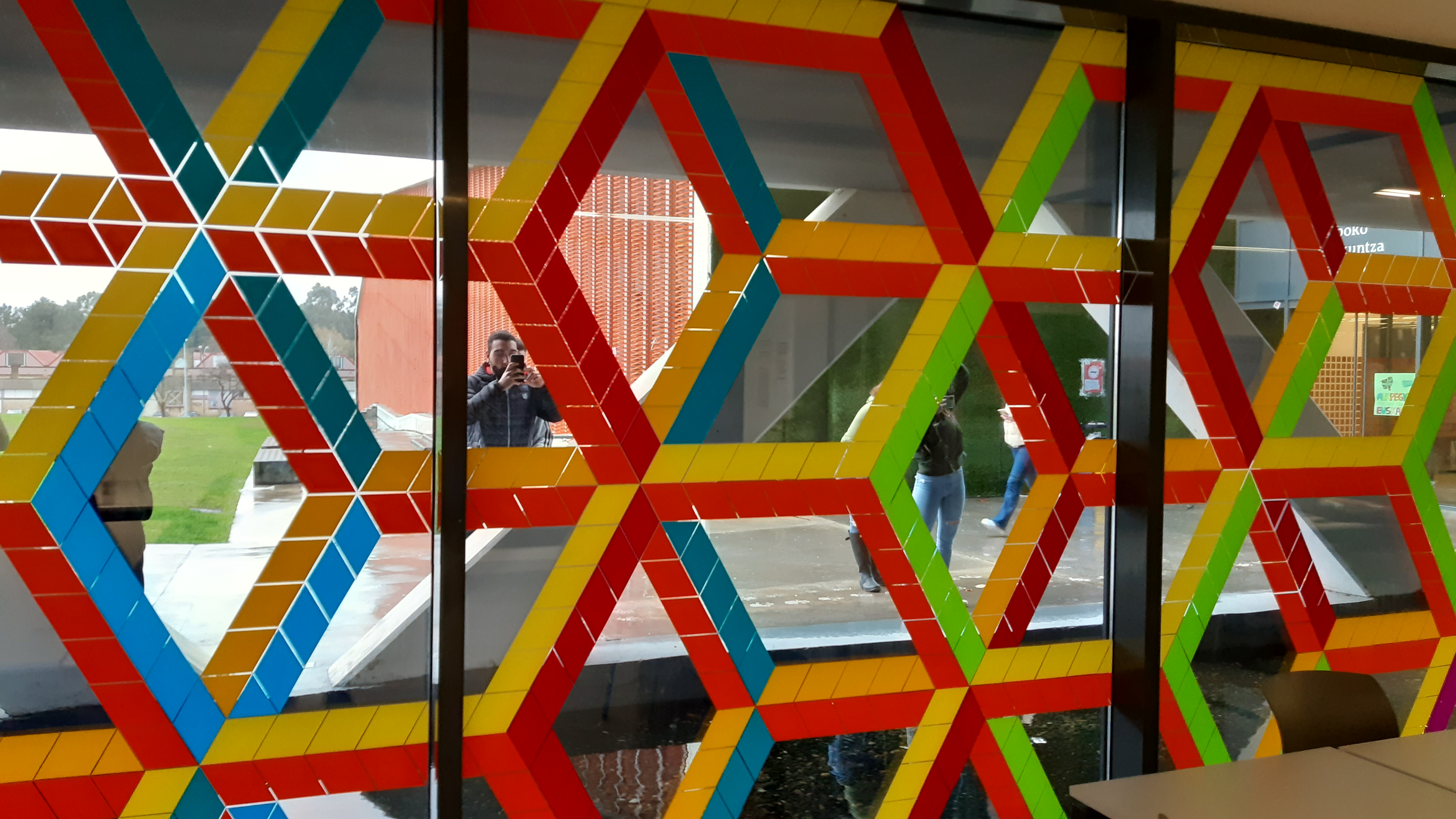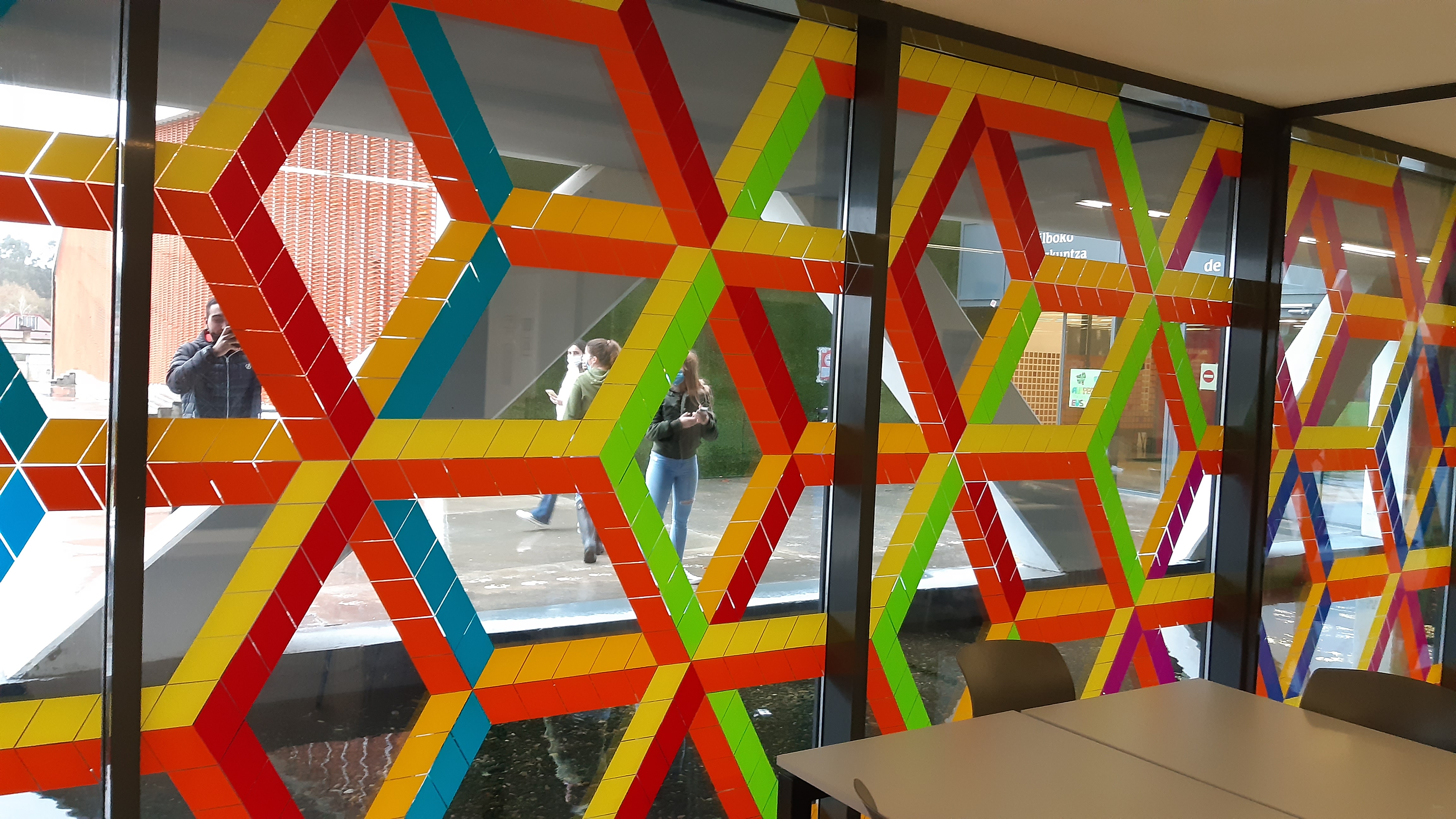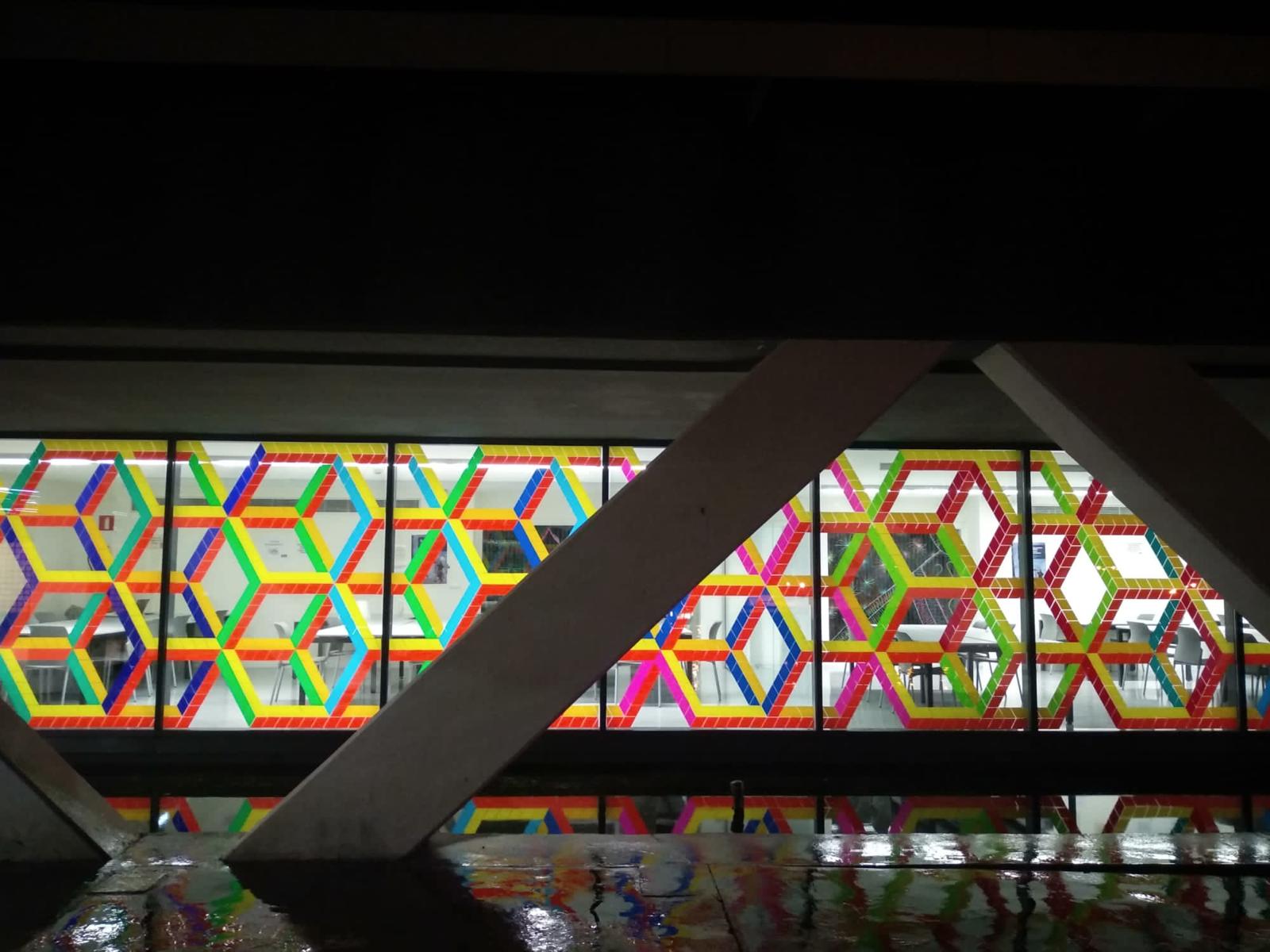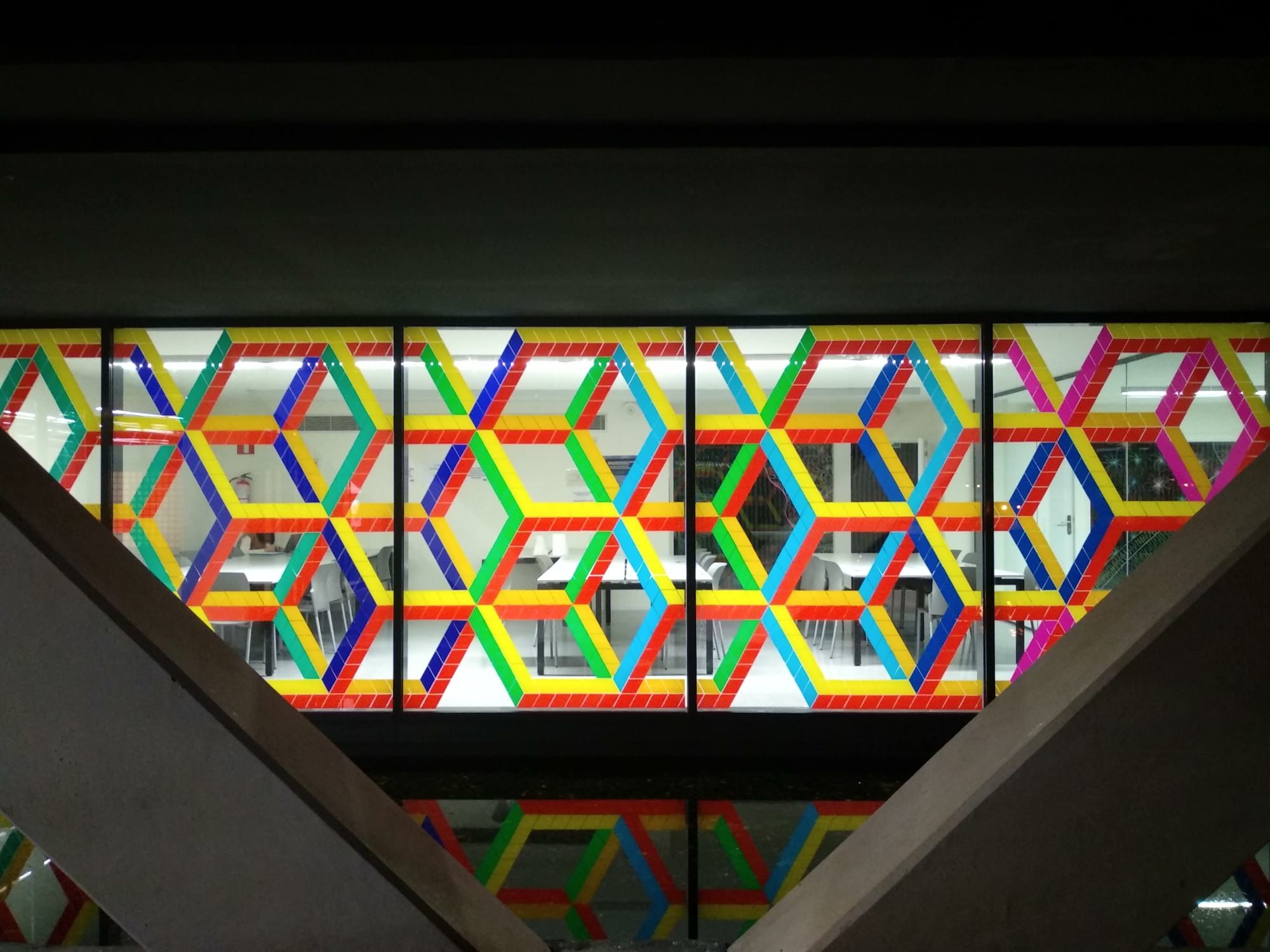Glass Drawing 2021.Havana
Instalation
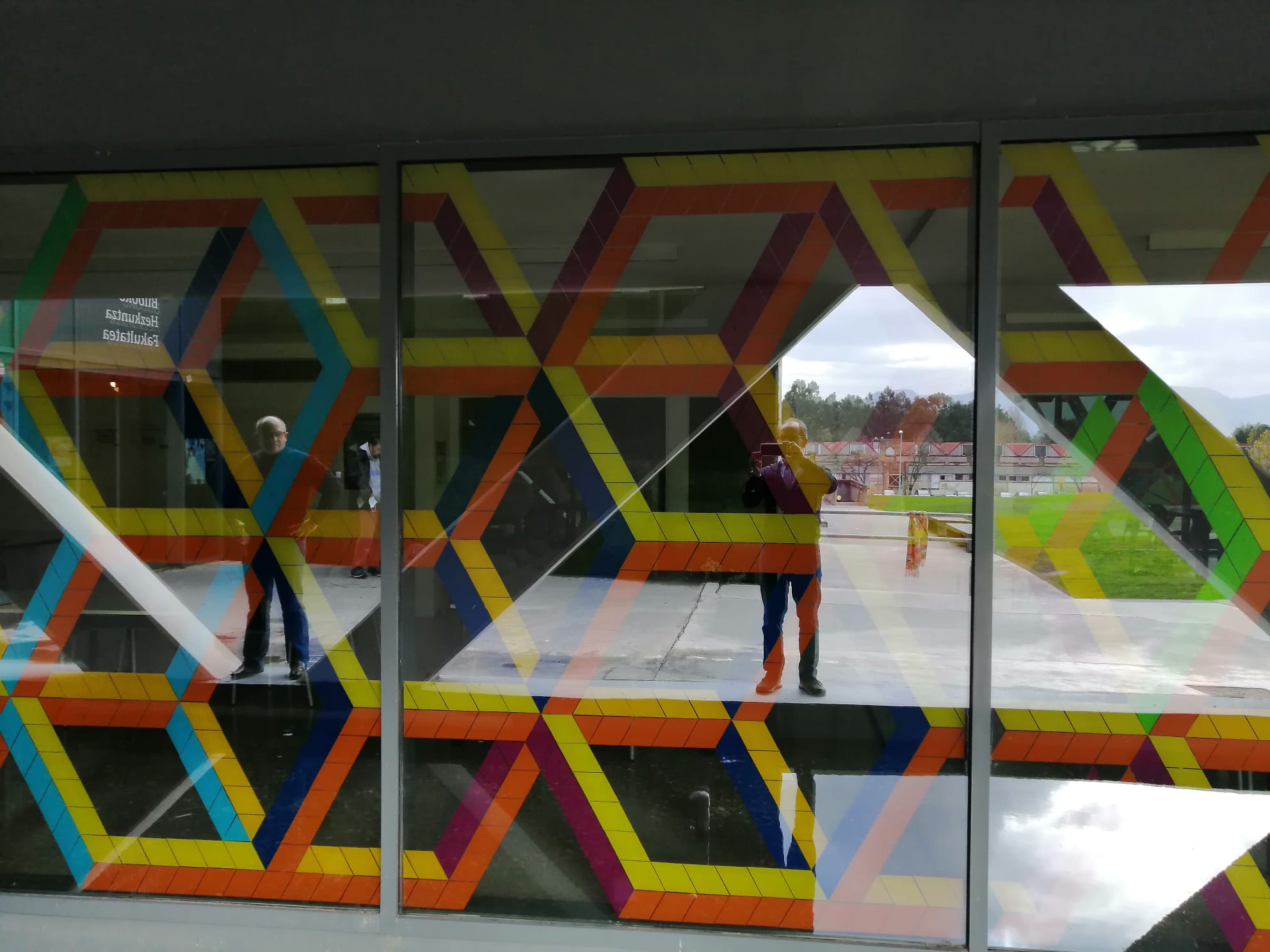
- Title: Glass Drawing 2021.Havana
- Art and Project: JC Olabe, MA Olabe & Xabier Basogain
- Collaborators: 2nd year students of the Degree in Primary Education (Collaborative Work *)
- Technique: Translucent vinyl on glass
- Size: 1830 cm x 238 cm
- Date: November 2021
- Place: Study Room at the main entrance of the Bilbao Faculty of Education
Glass Drawing 2021.Havana is a stained glass window that represents a window that allows us to see the outside world.
It can be the window of a classroom, the window of a study room, the glass wall of a museum, or the command bridge of a large spaceship.
It is a wall that protects us from the outside, but unites us to it.
It is made up of 10 three-dimensional units.
Each unit is a cube slightly larger than the size of a human being (2.4 meters x 2.4 meters x 2.4 meters).
In turn, each cube is made up of 8 incomplete cubes (three of its twelve edges have been eliminated).
The external shape is hexagonal and in turn encompasses 6 other internal hexagons.
Windows: between these hexagons there are 12 diamond-shaped windows oriented to the three coordinate axes.
Each of the 8 incomplete cubes is based on the numbers 2, 3, and 4.
Four edges at the base and three columns that join the two upper edges.
Each unit is distributed between two adjacent glass panels.
Each panel connects a unit on the left with another on the right, giving continuity to the design.
The sun illuminates the north-south, east-west, and front-back axes with different intensity.
This lighting determines the color of the edges of the structure.
The distribution of colors is carried out through the three axes of solar lighting.
There is a continuity of orange and yellow colors on the north-south and back-forward axes.
On the east-west axis there is a sequence of two colors per panel. These colors are repeated three times. This produces a periodicity on the east-west axis based on the first two primes: two and three. The east-west axis color pattern explores the different permutations of 8 segments with two colors.
This window is designed to use external solar lighting as a light source and the great luminous value of the external sheet of water.
This aquatic reflection is expected to extend the chromatic and structural value of the stained glass window to the ceiling of the classroom.
This window presents three modes of observation
In the closest mode, the local, the contrast and harmony of colors and basic geometric elements (triangles, rhombuses, rhomboids and hexagons) prevail.
In the intermediate mode, viewing one panel and the two adjacent ones, the three-dimensional structure of the cubes of a size slightly greater than the size of the human being (2.4 meters x 2.4 meters x 2.4 meters) prevails, and the chaining of these cubes.
In the farthest mode, in which we can see the total of the stained glass window, the architectural value of the structure prevails. It is a self-supporting construction of great structural robustness that at the same time allows to see the exterior in a diaphanous way.
This stained glass window contains a total of 130 individual windows, each with its own harmony of colors.
This configuration divides the outside world into 130 interrelated segments identifiable by the colors of the window from which they are viewed.
This stained glass window connects the interior space of the classrooms with the exterior garden space.
This allows it to be shared by citizens when they are students and when they are walkers.




